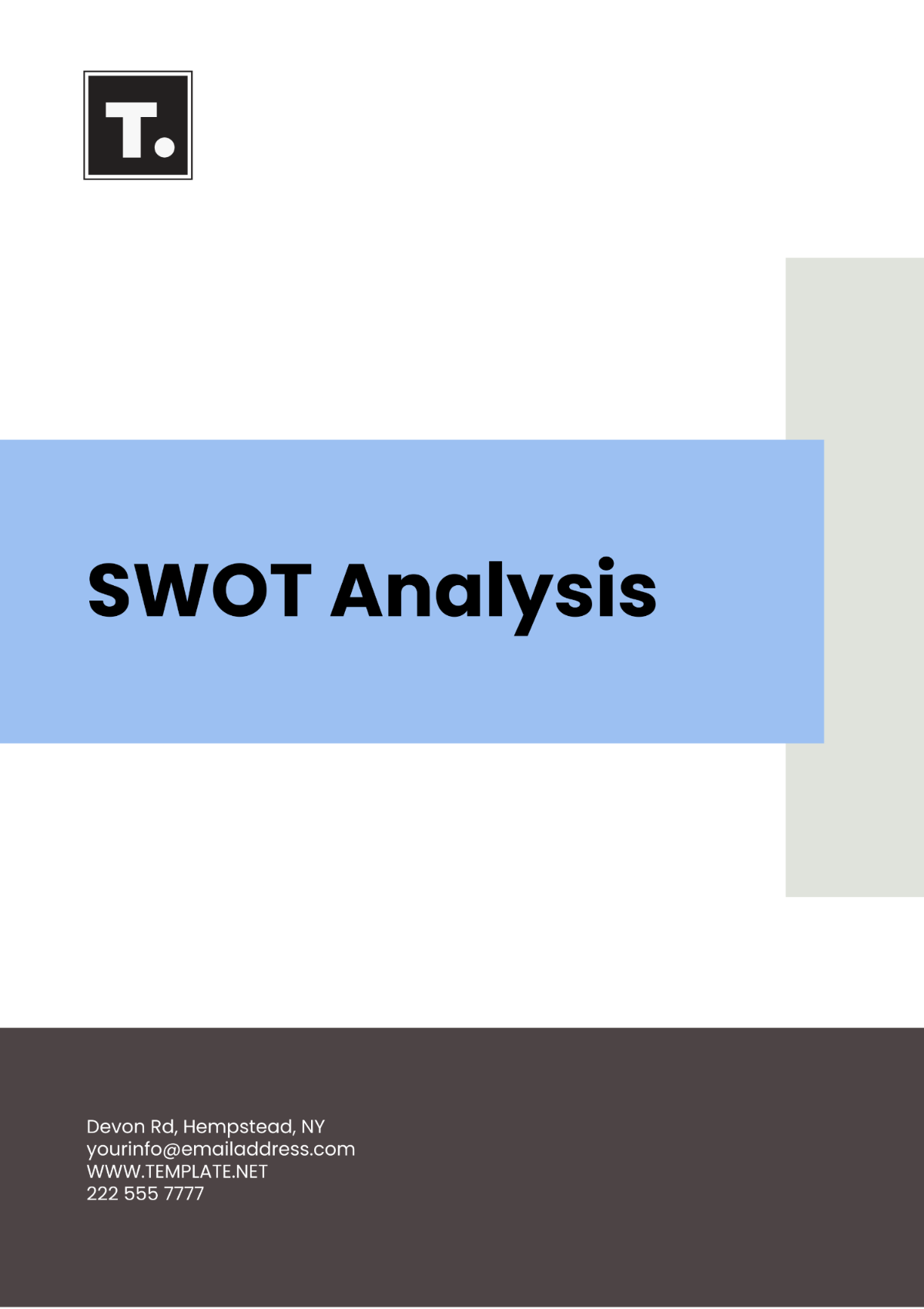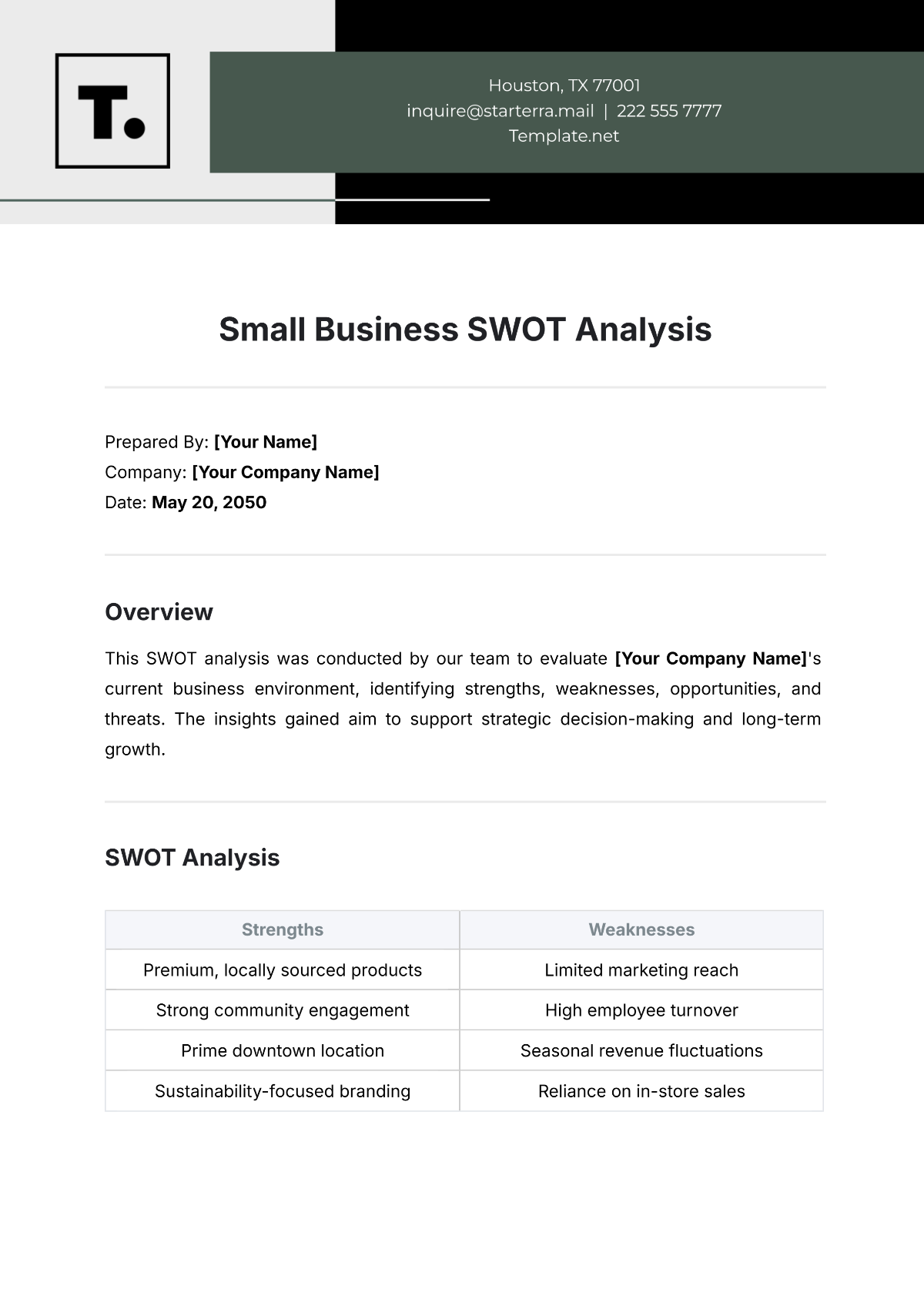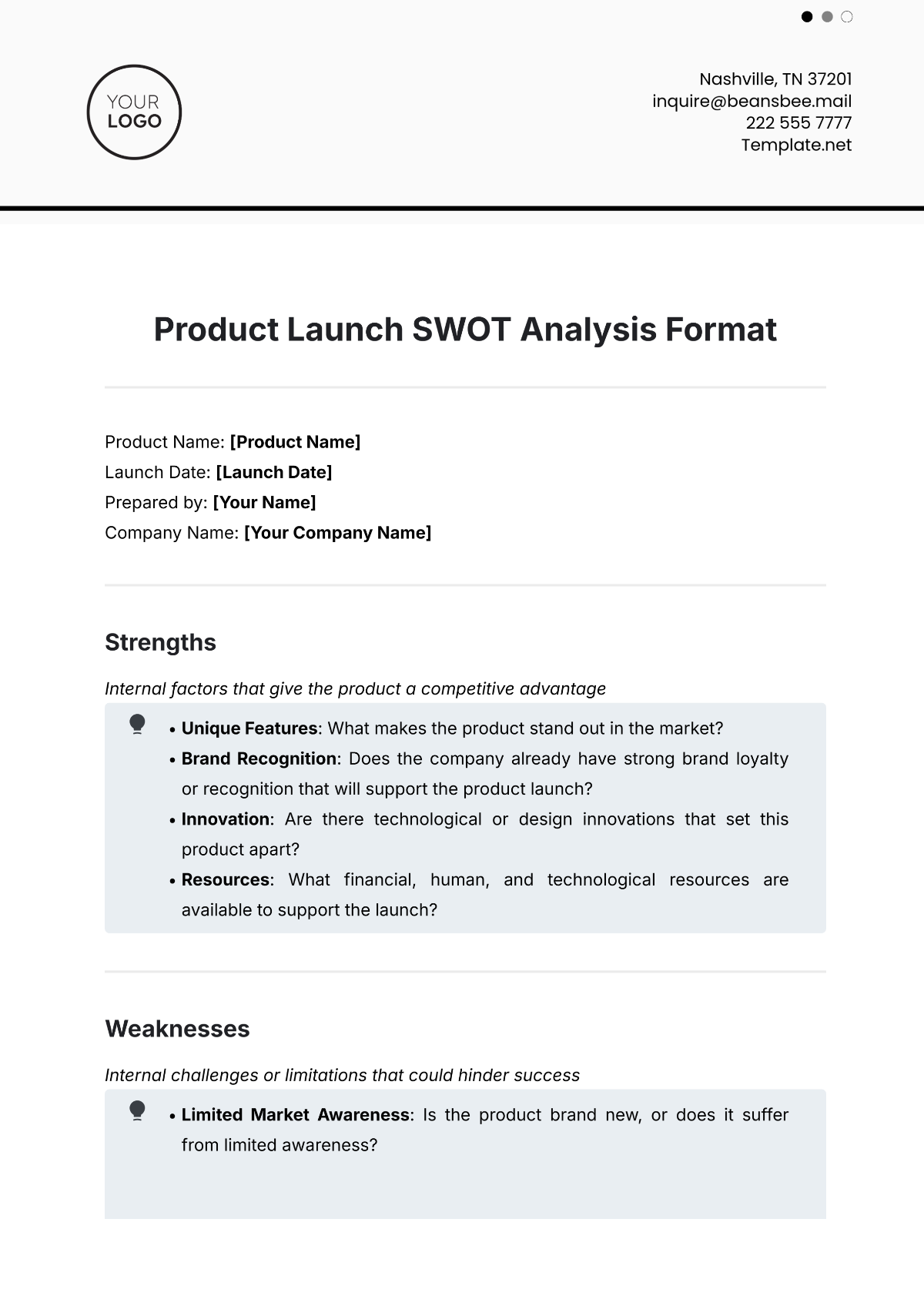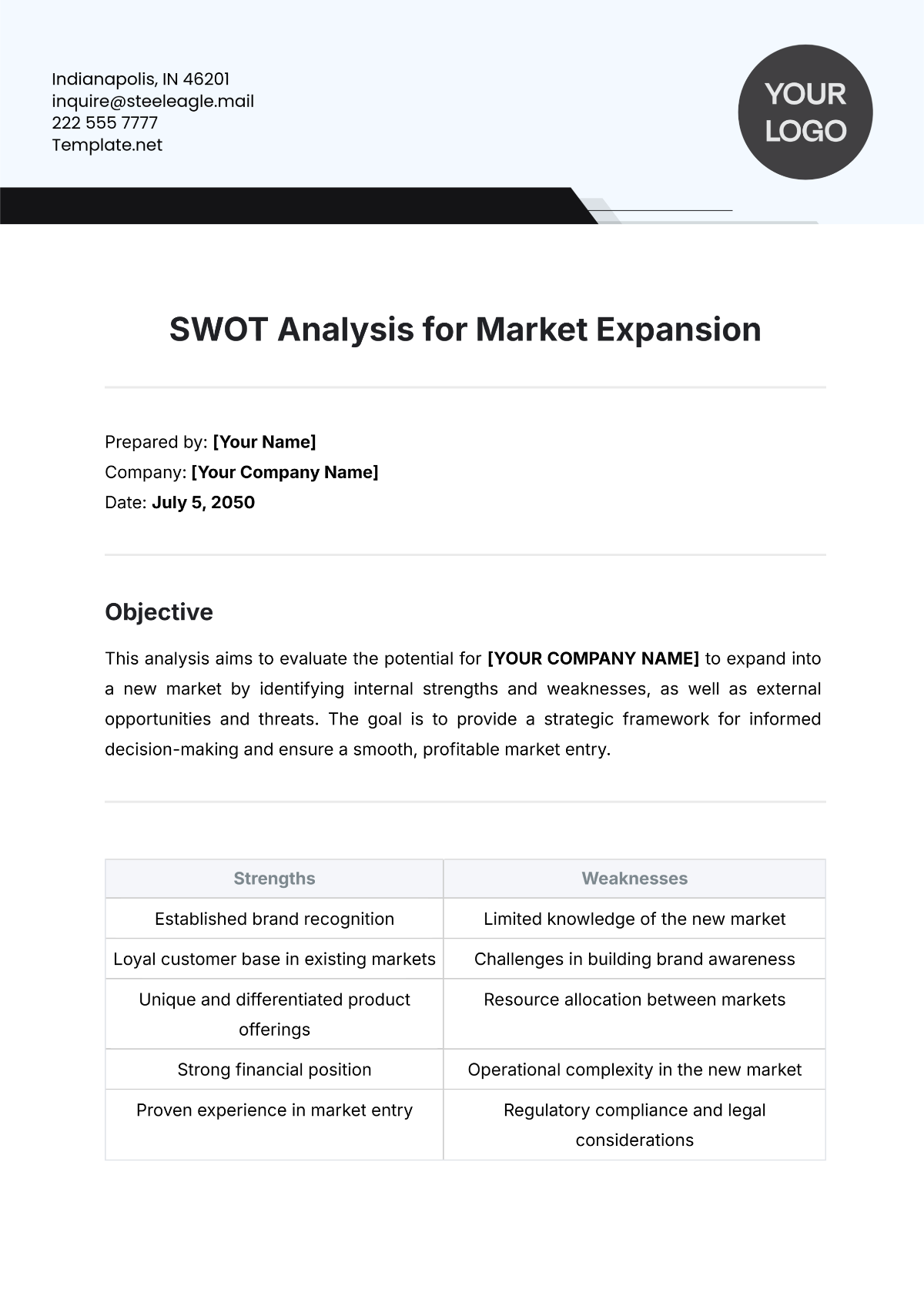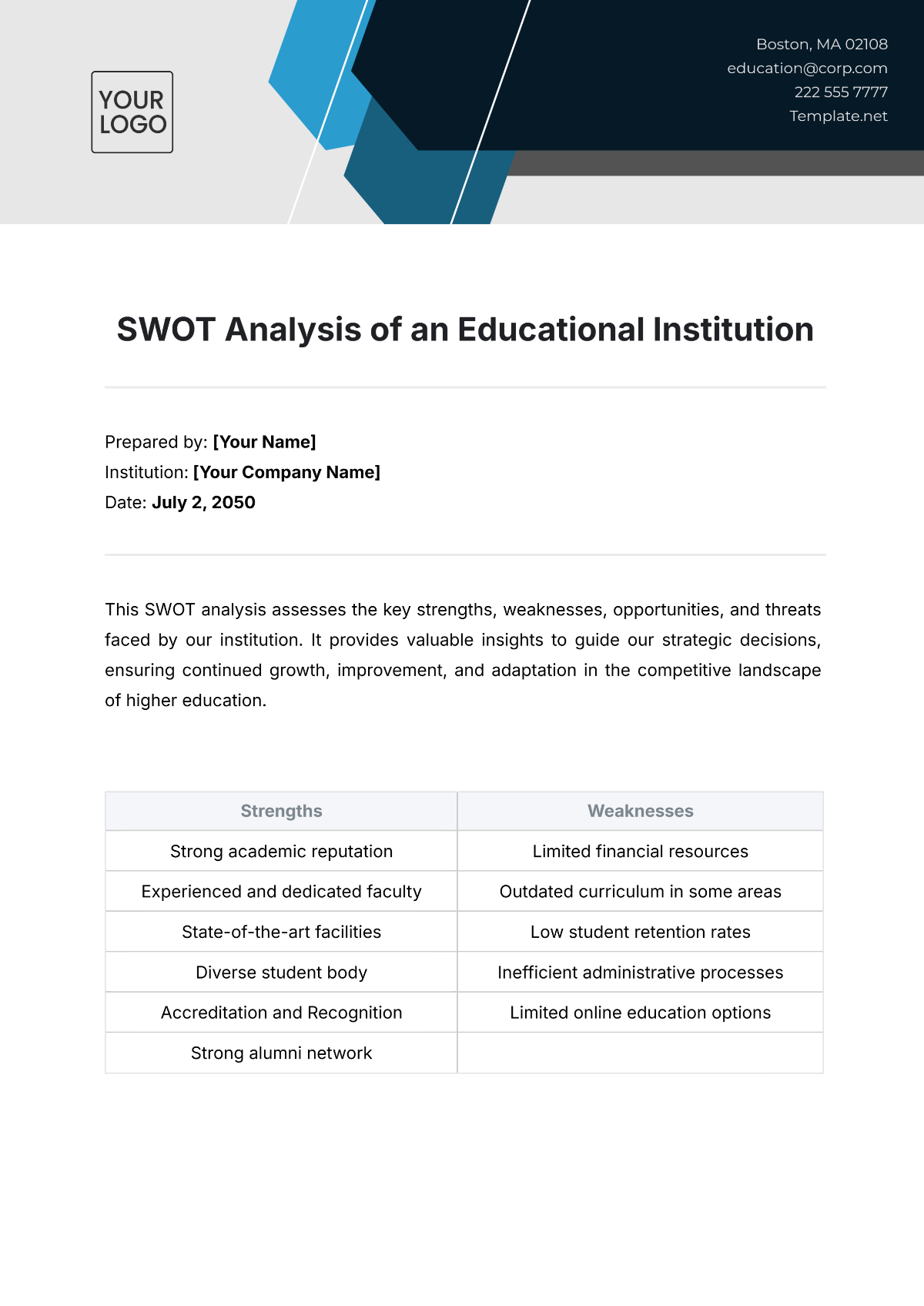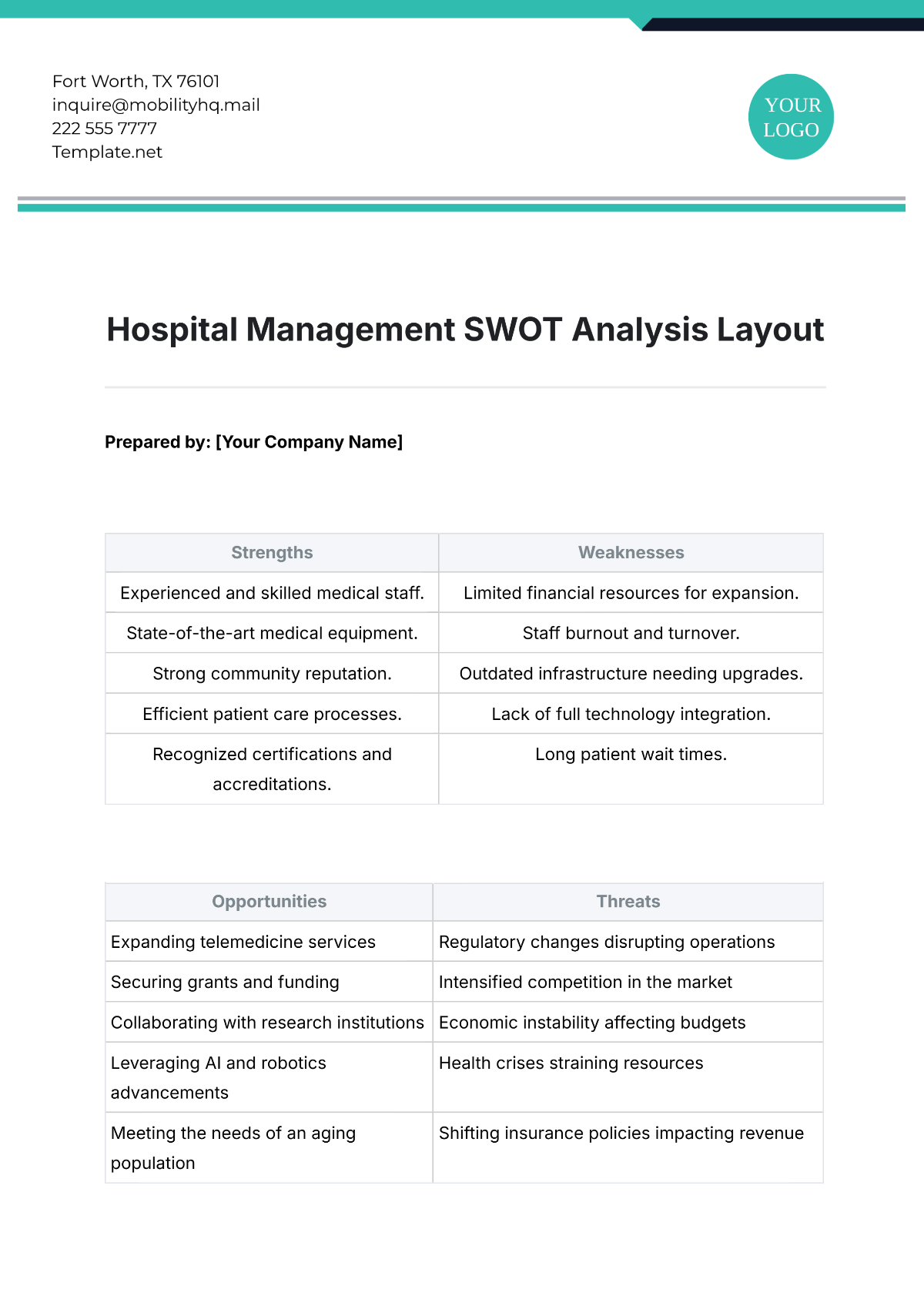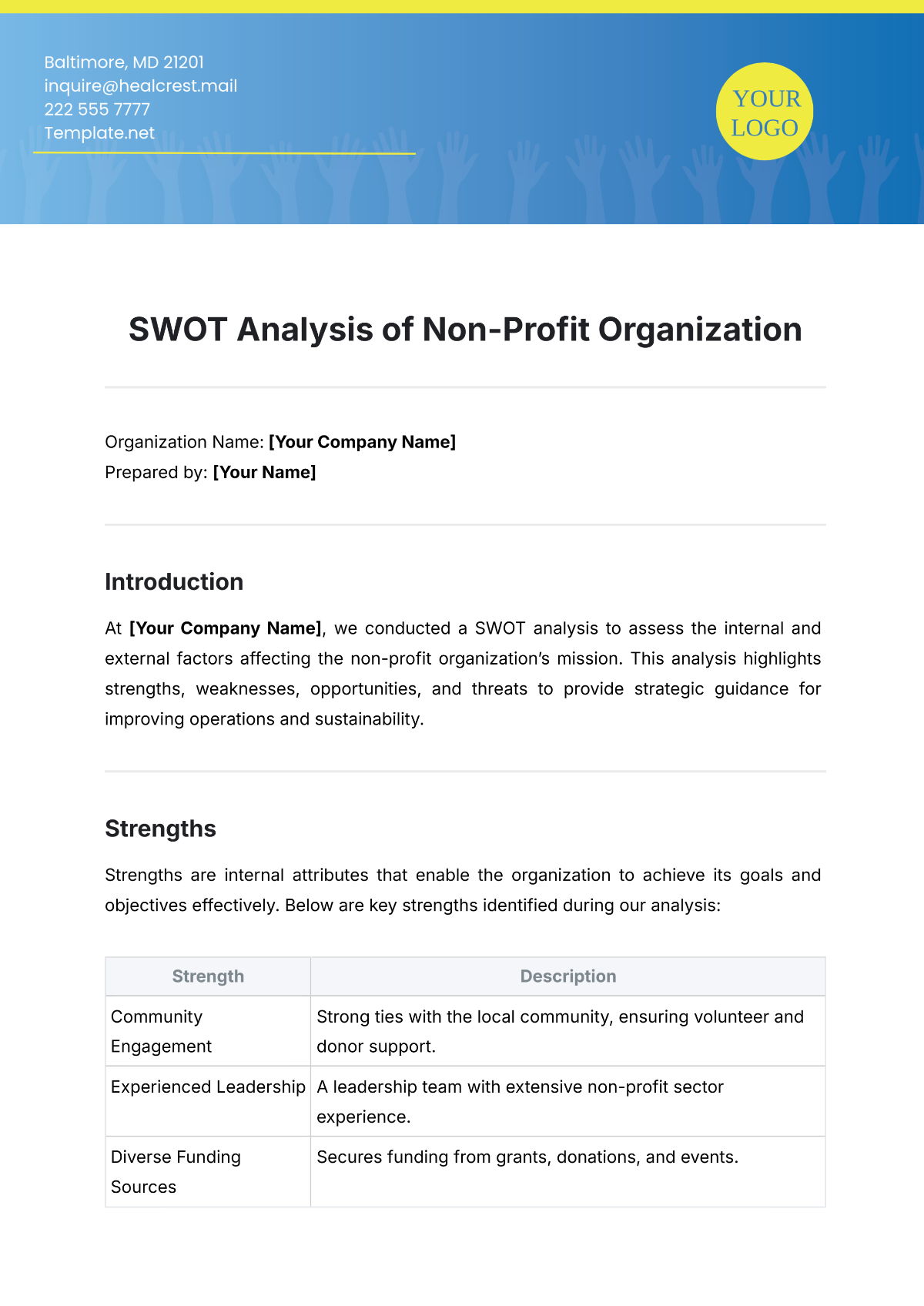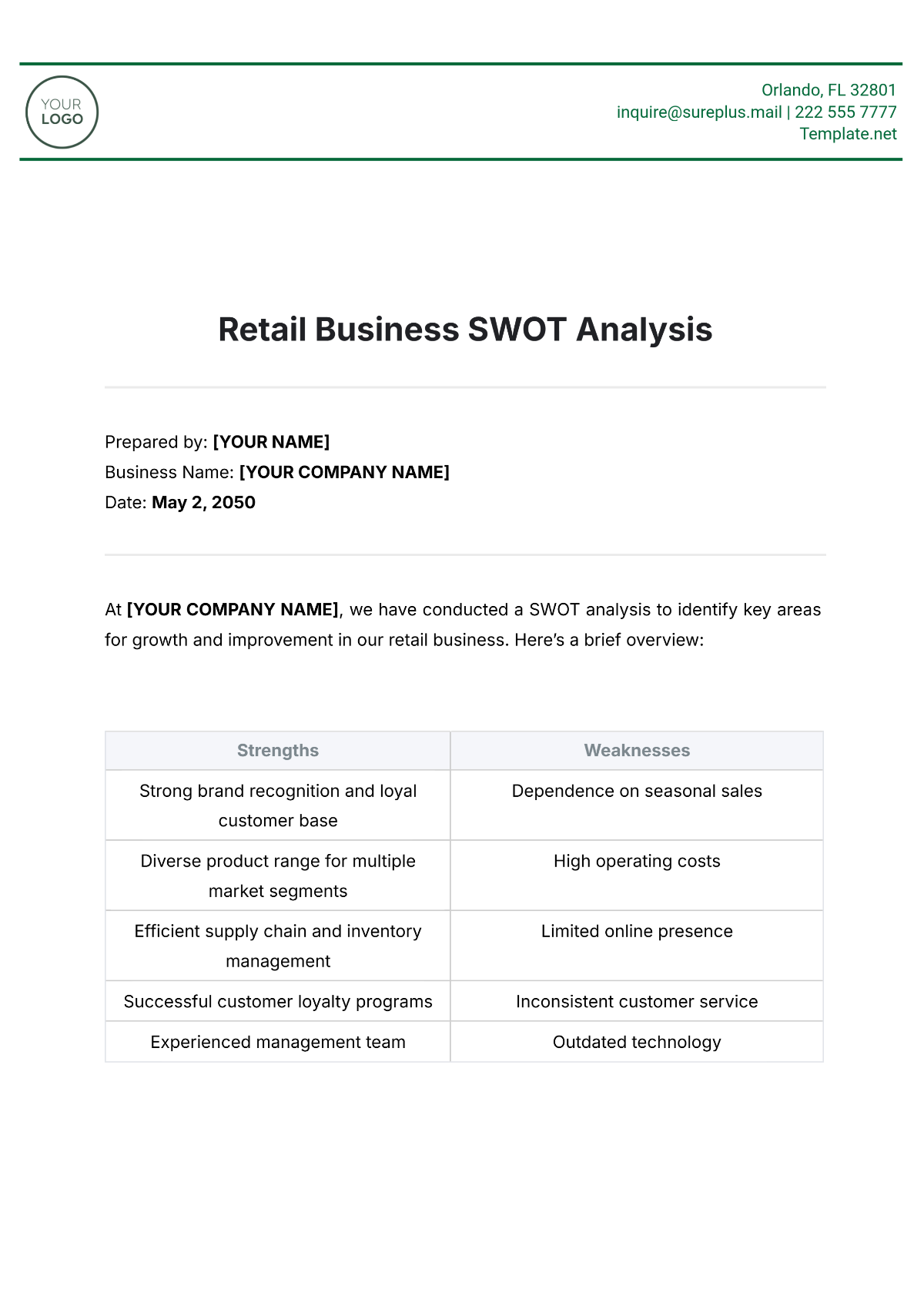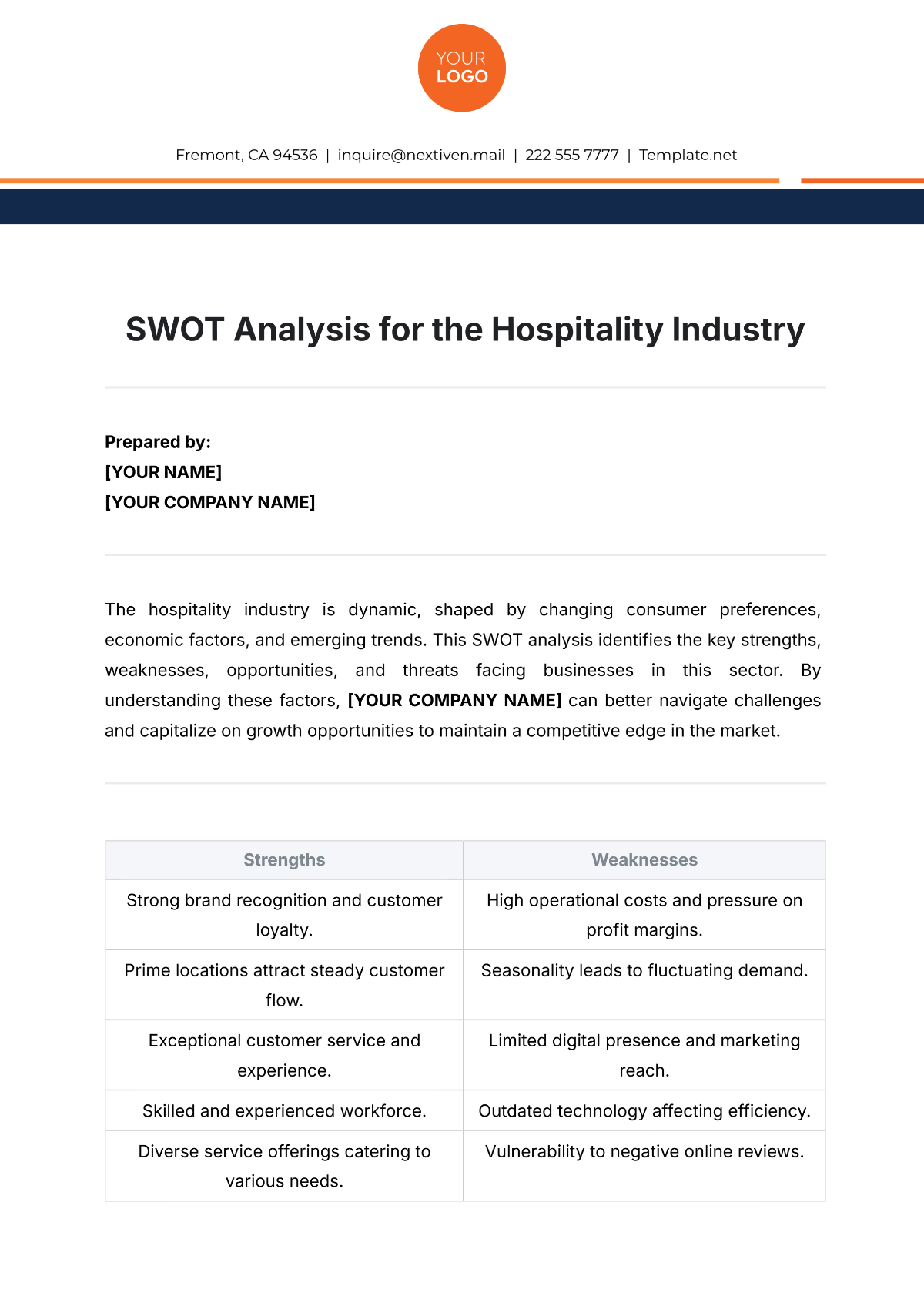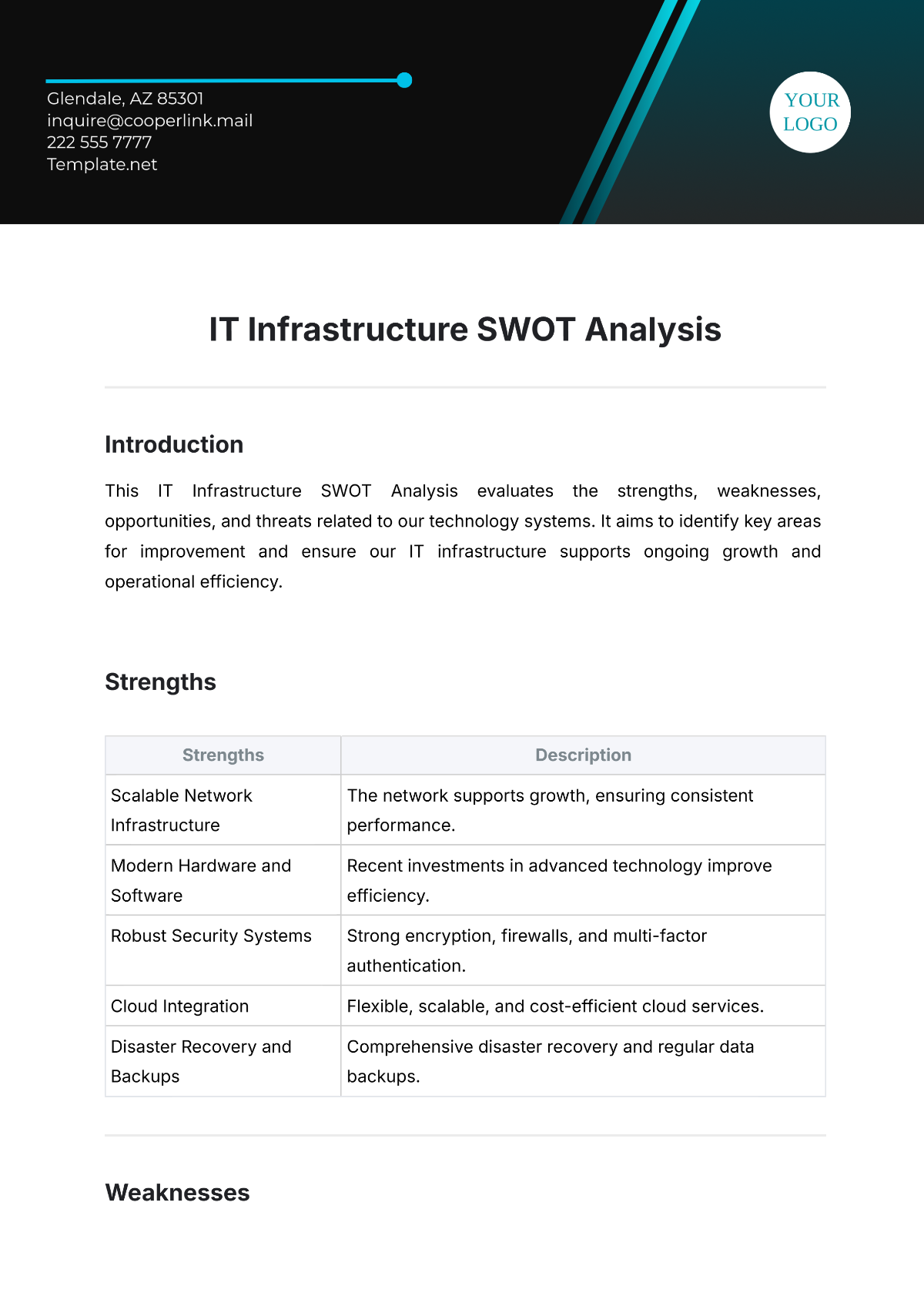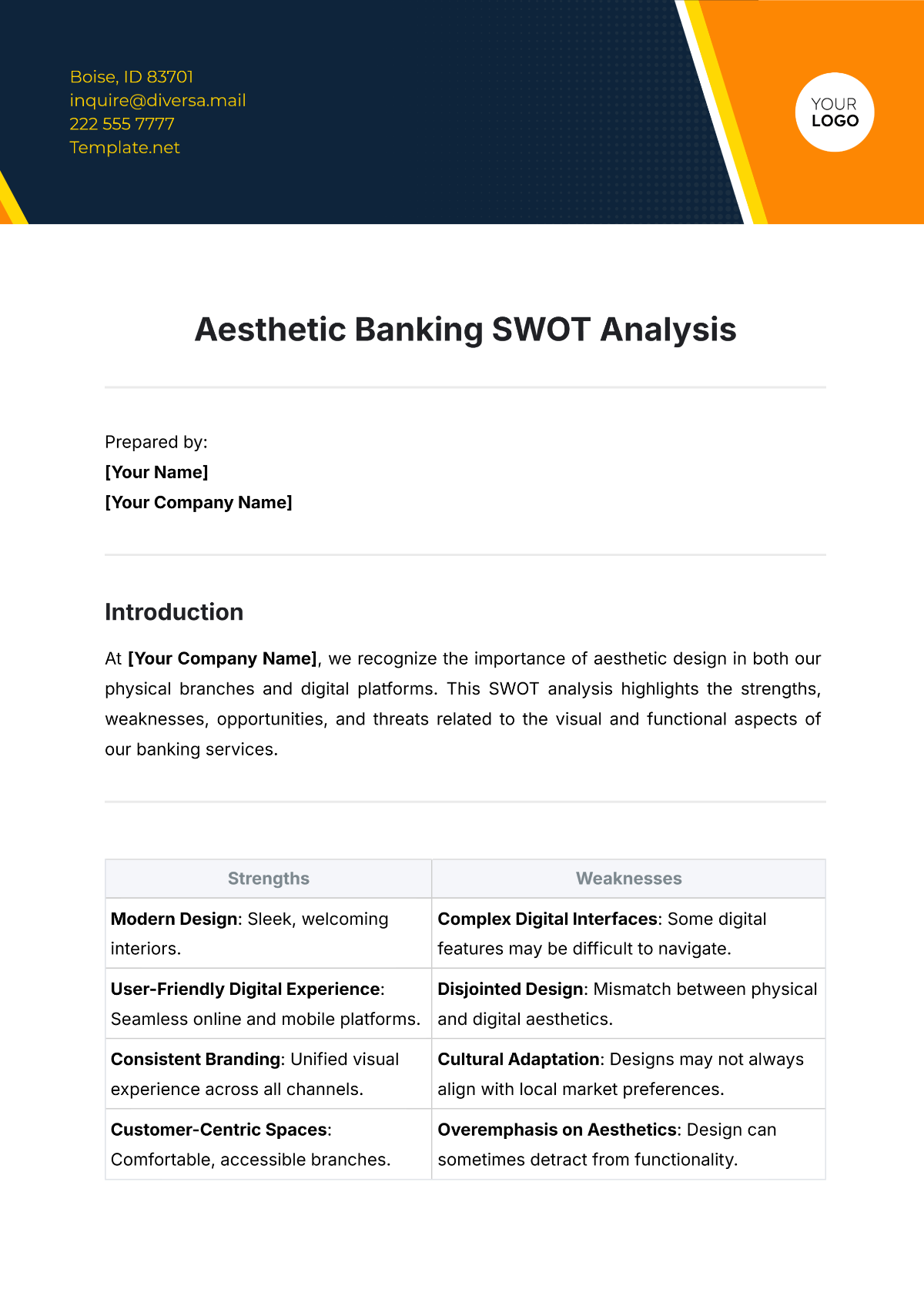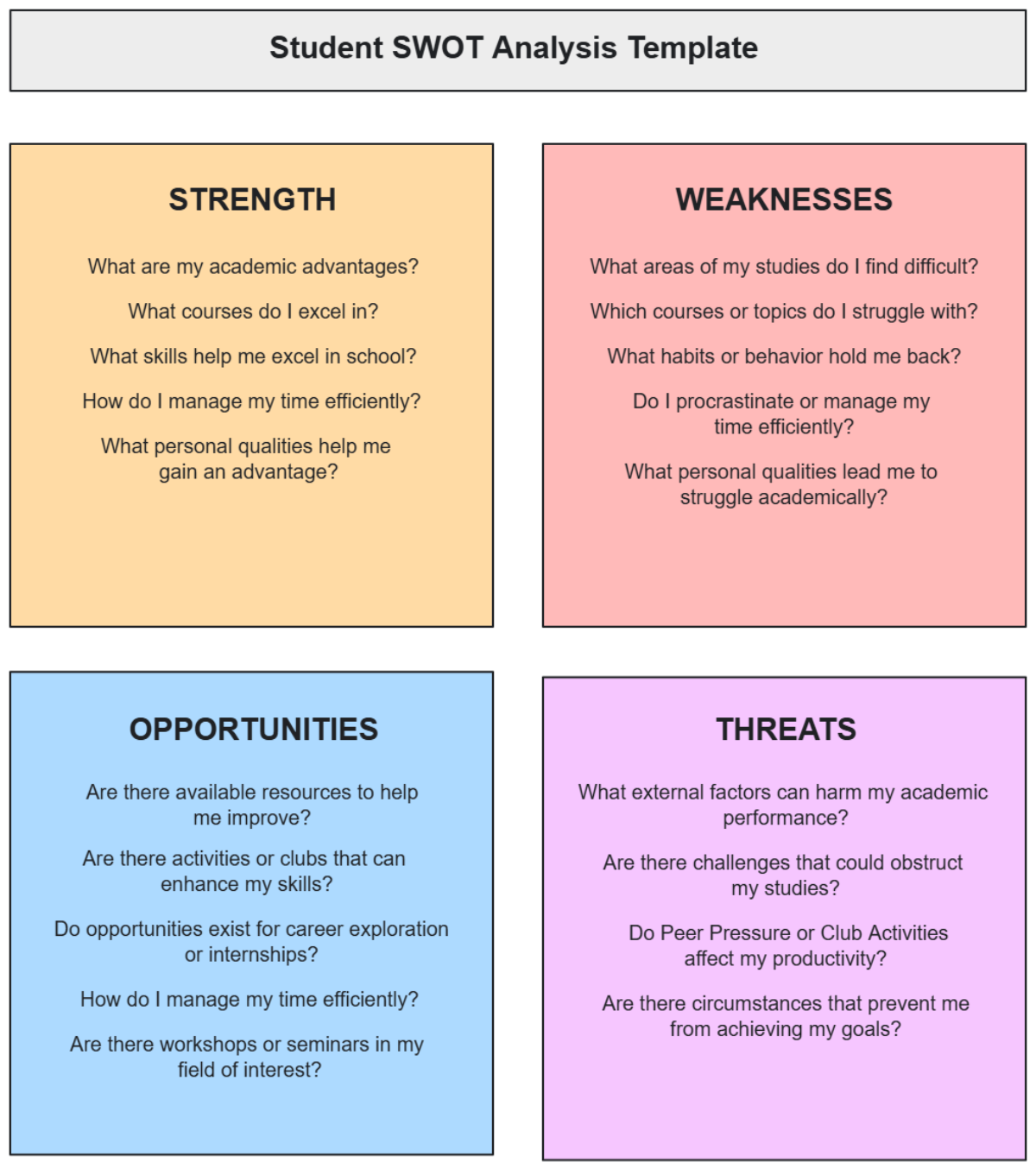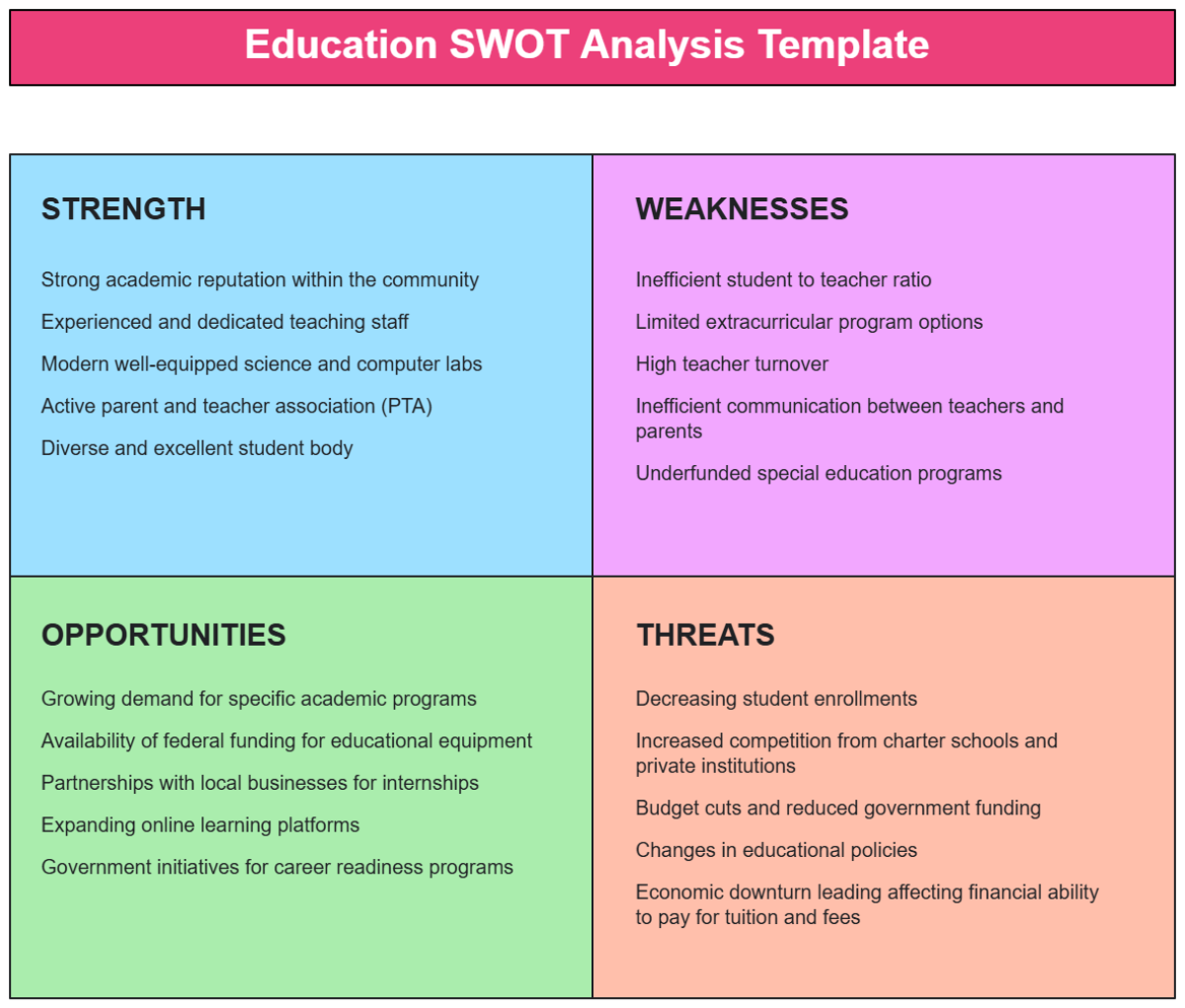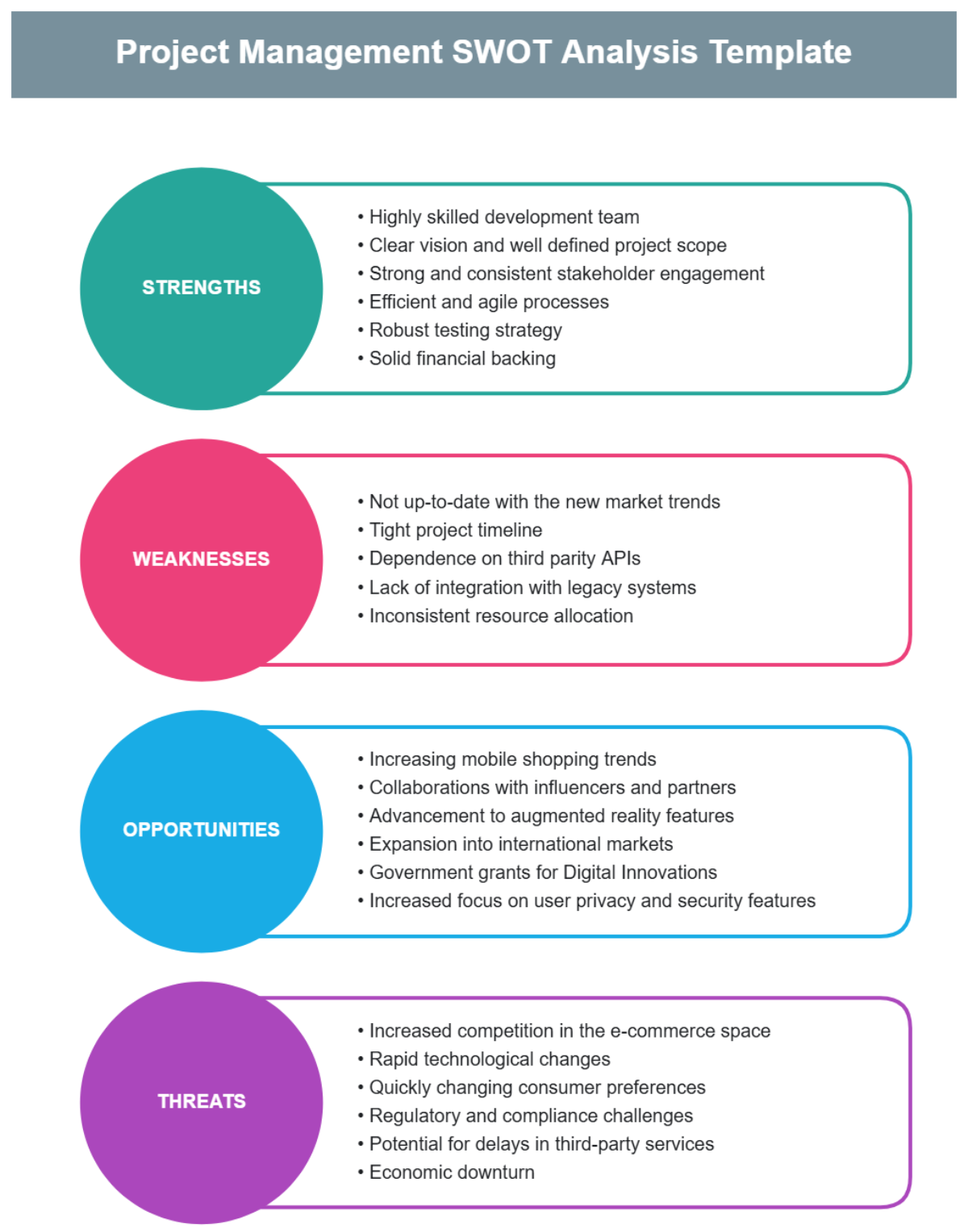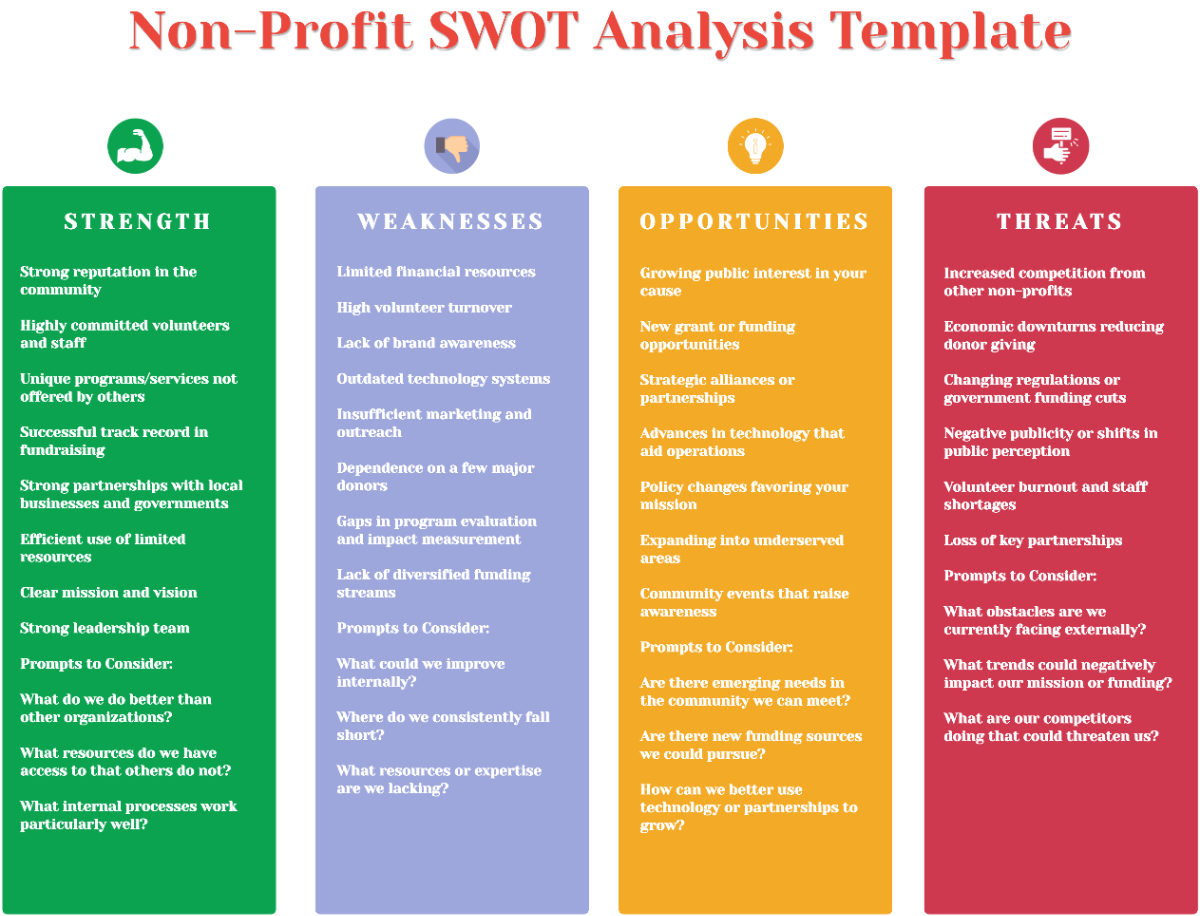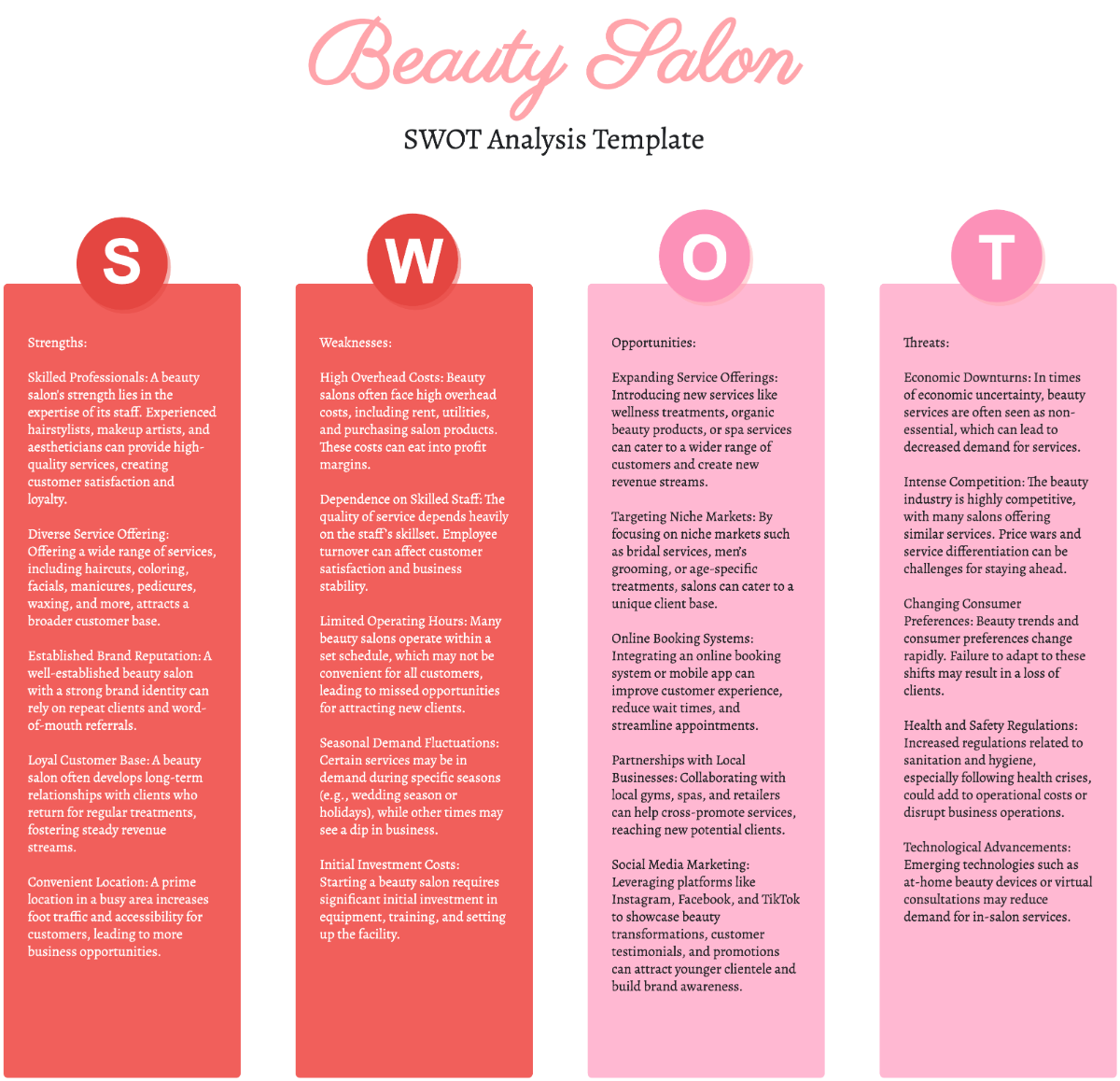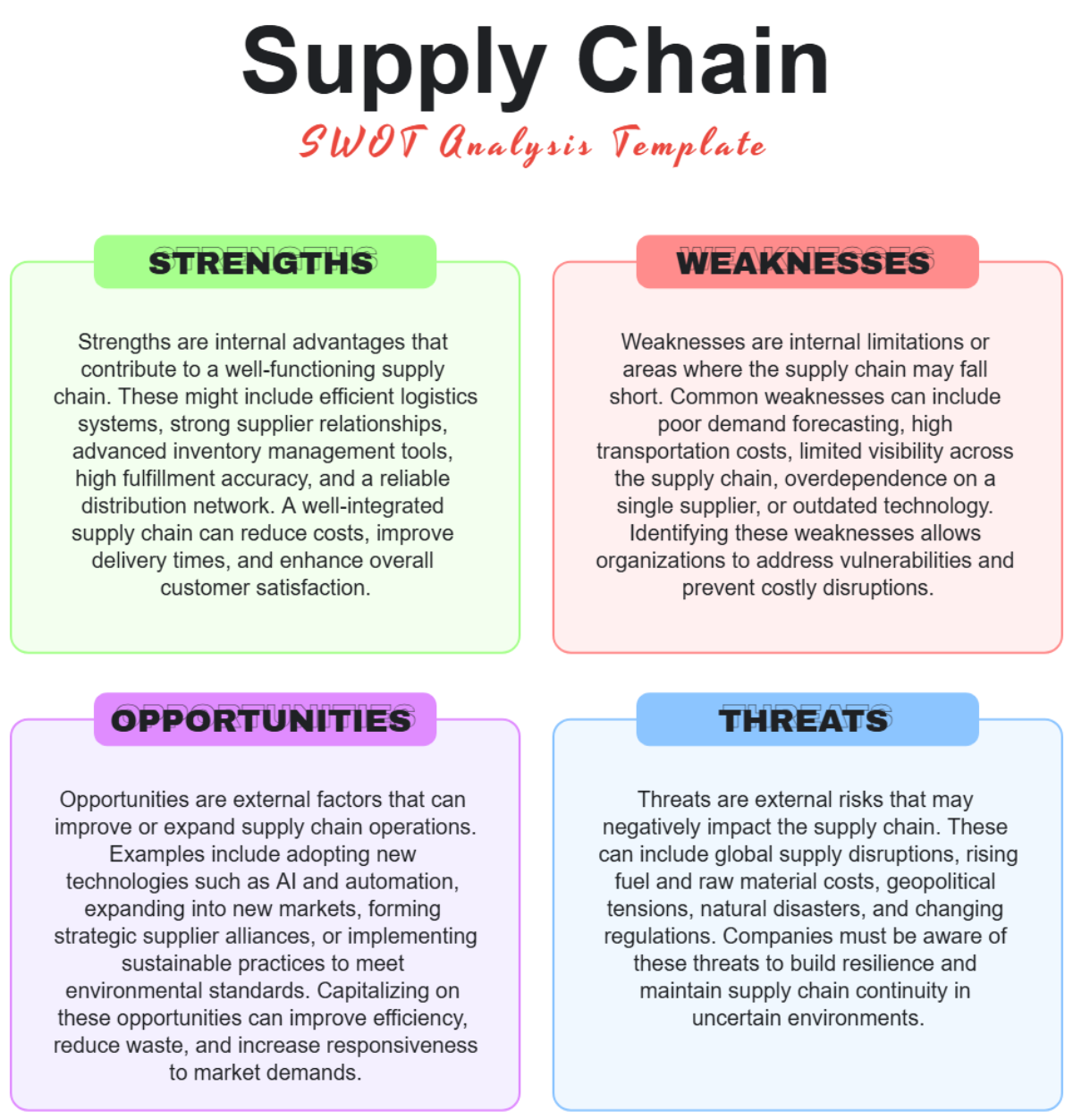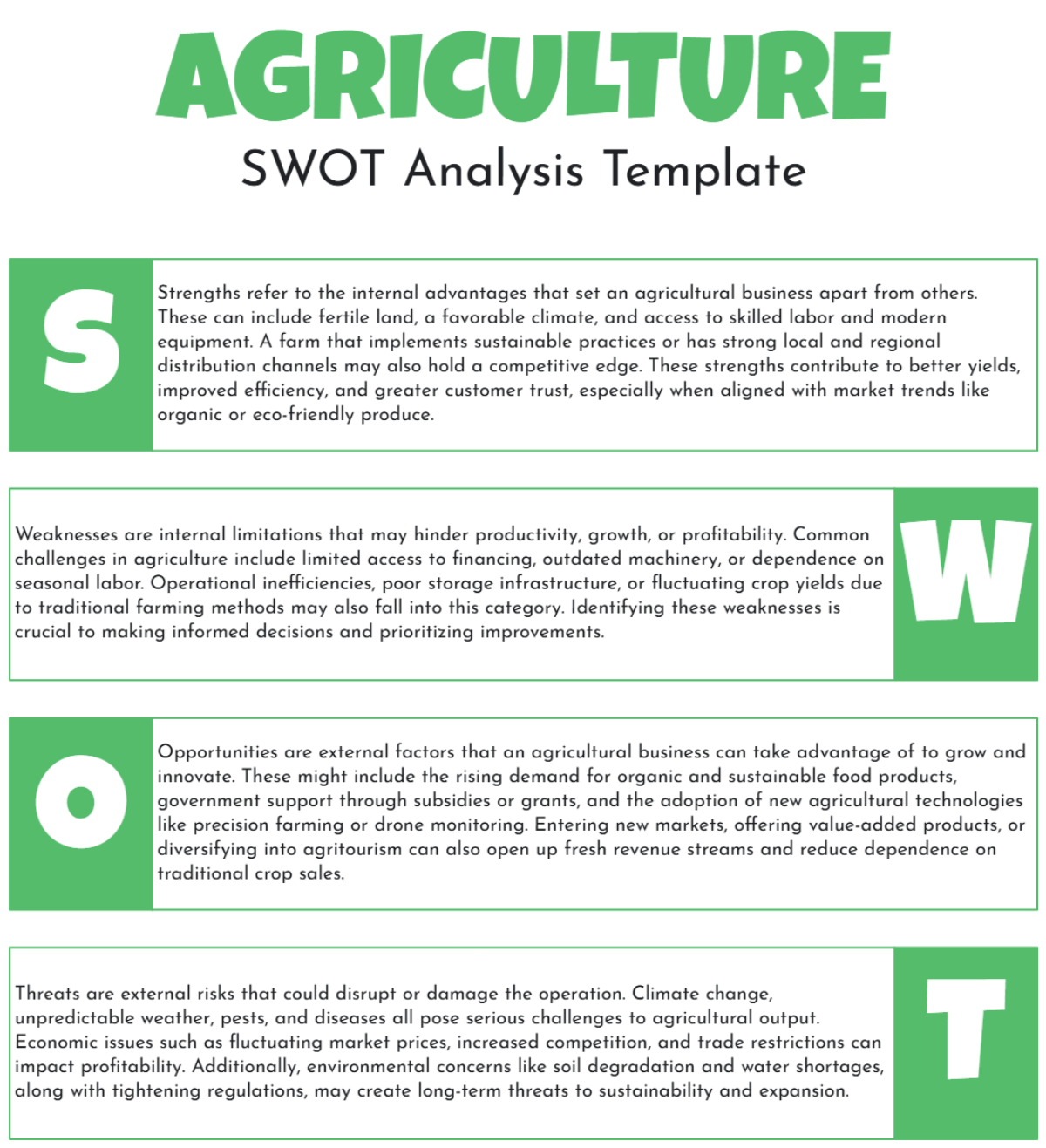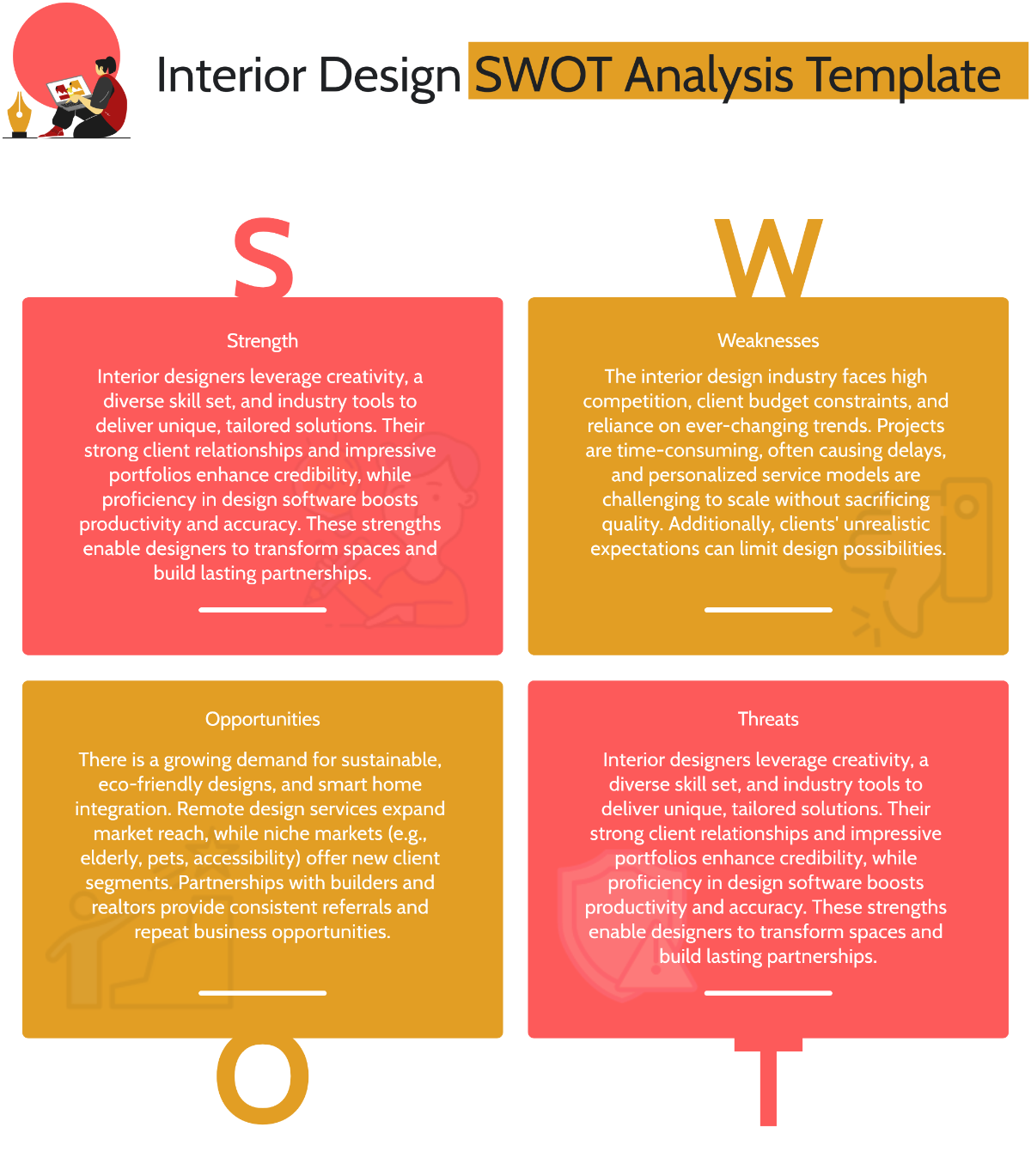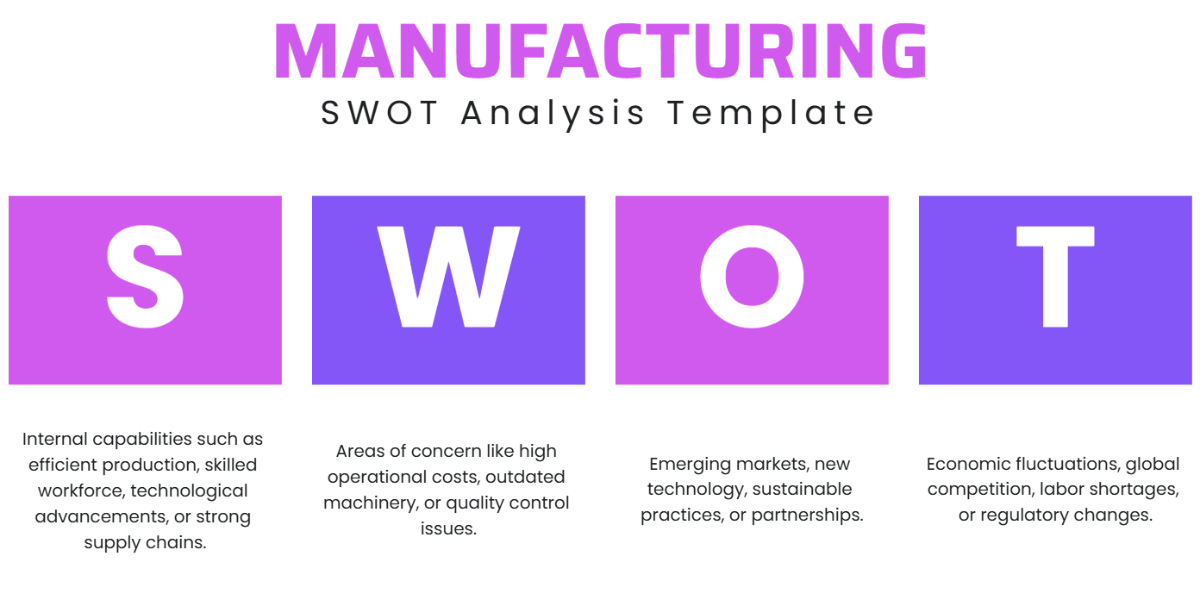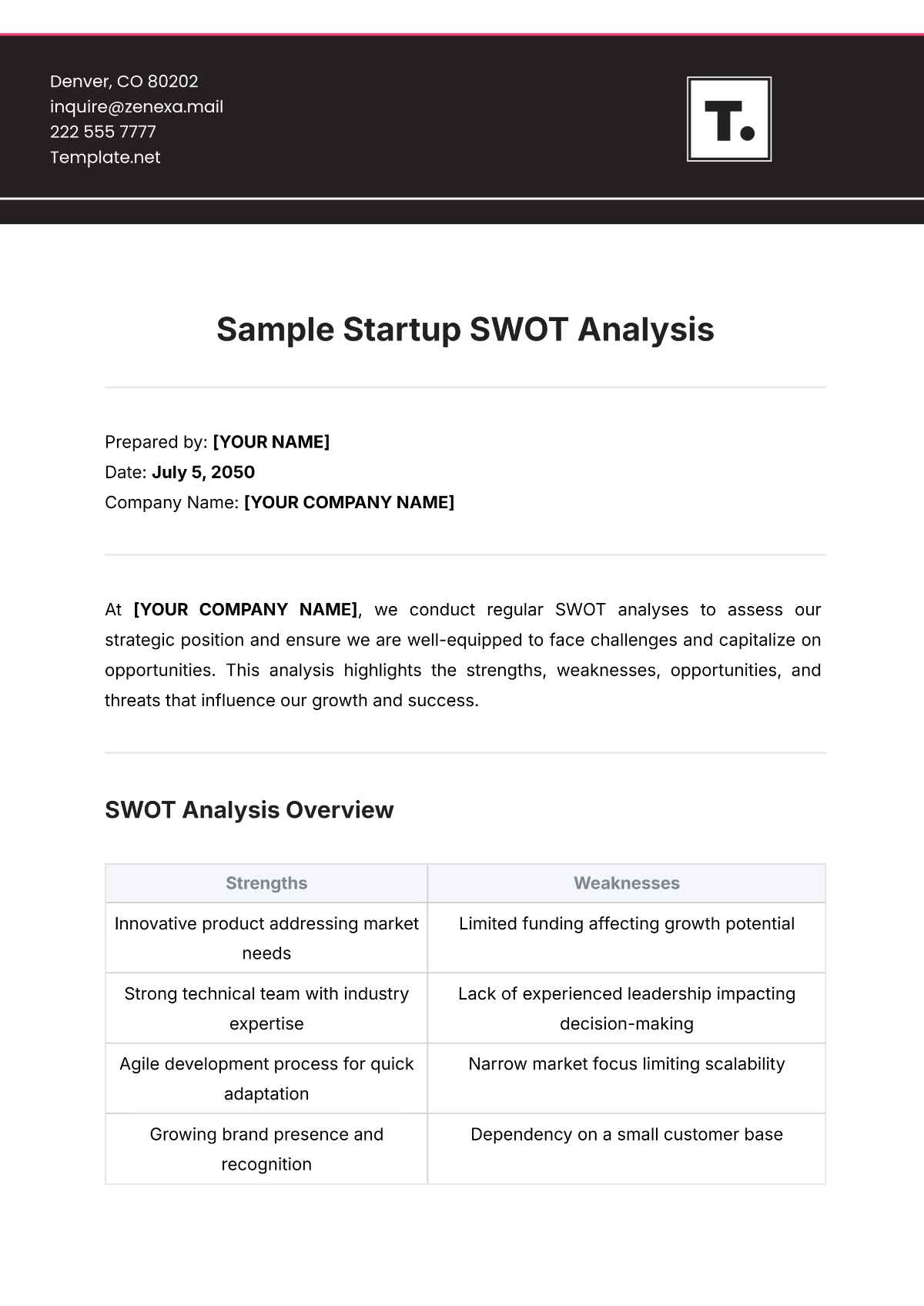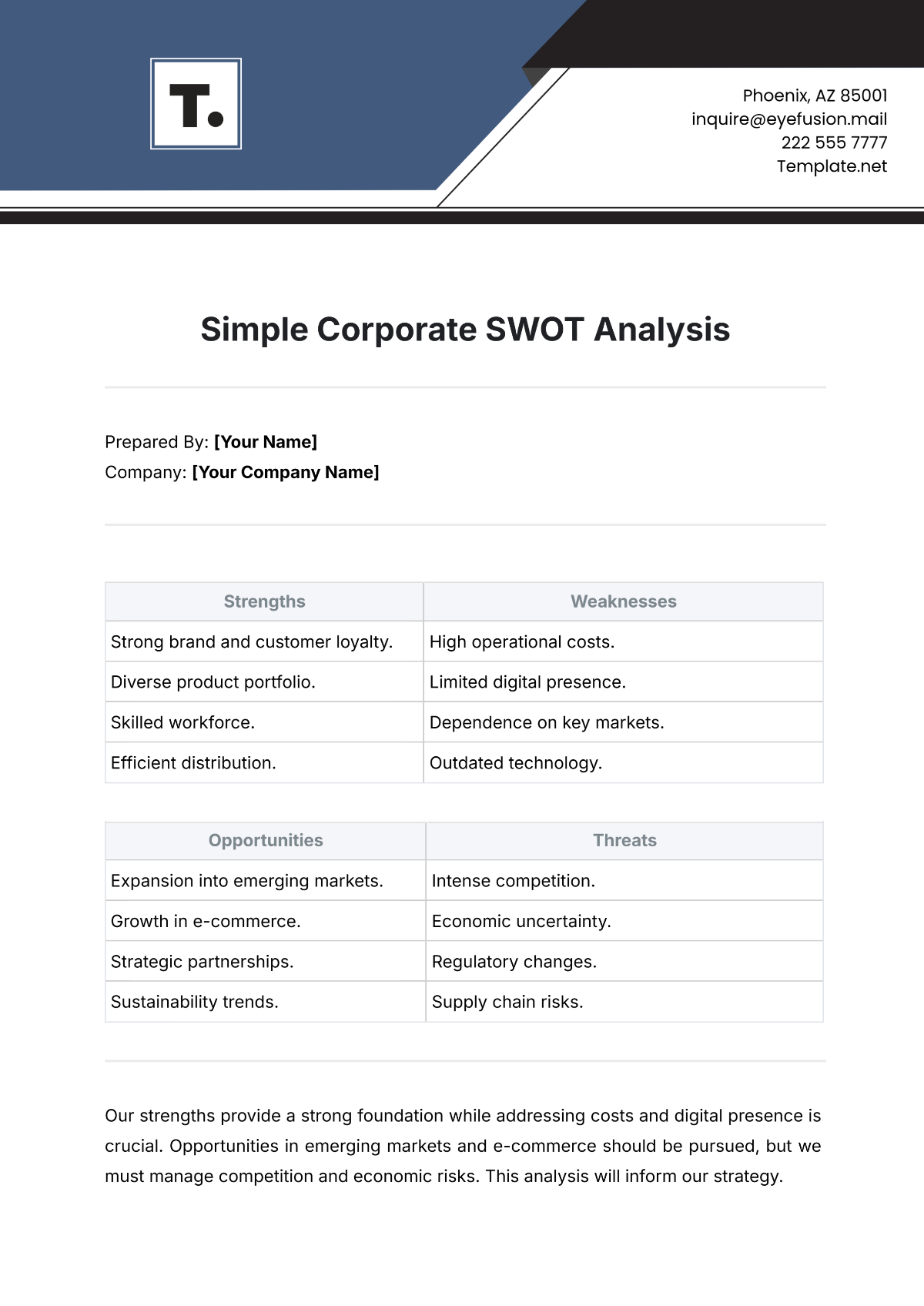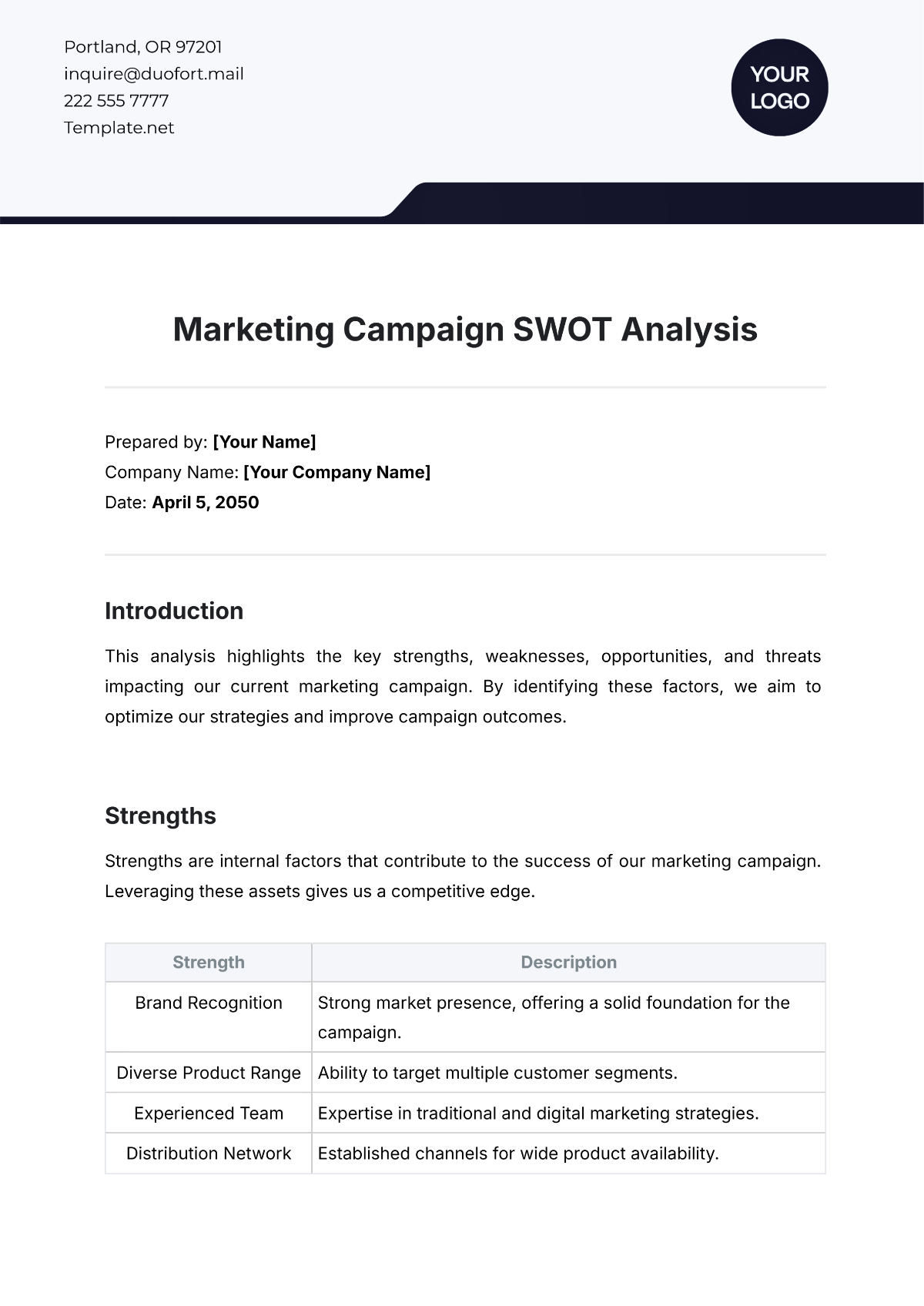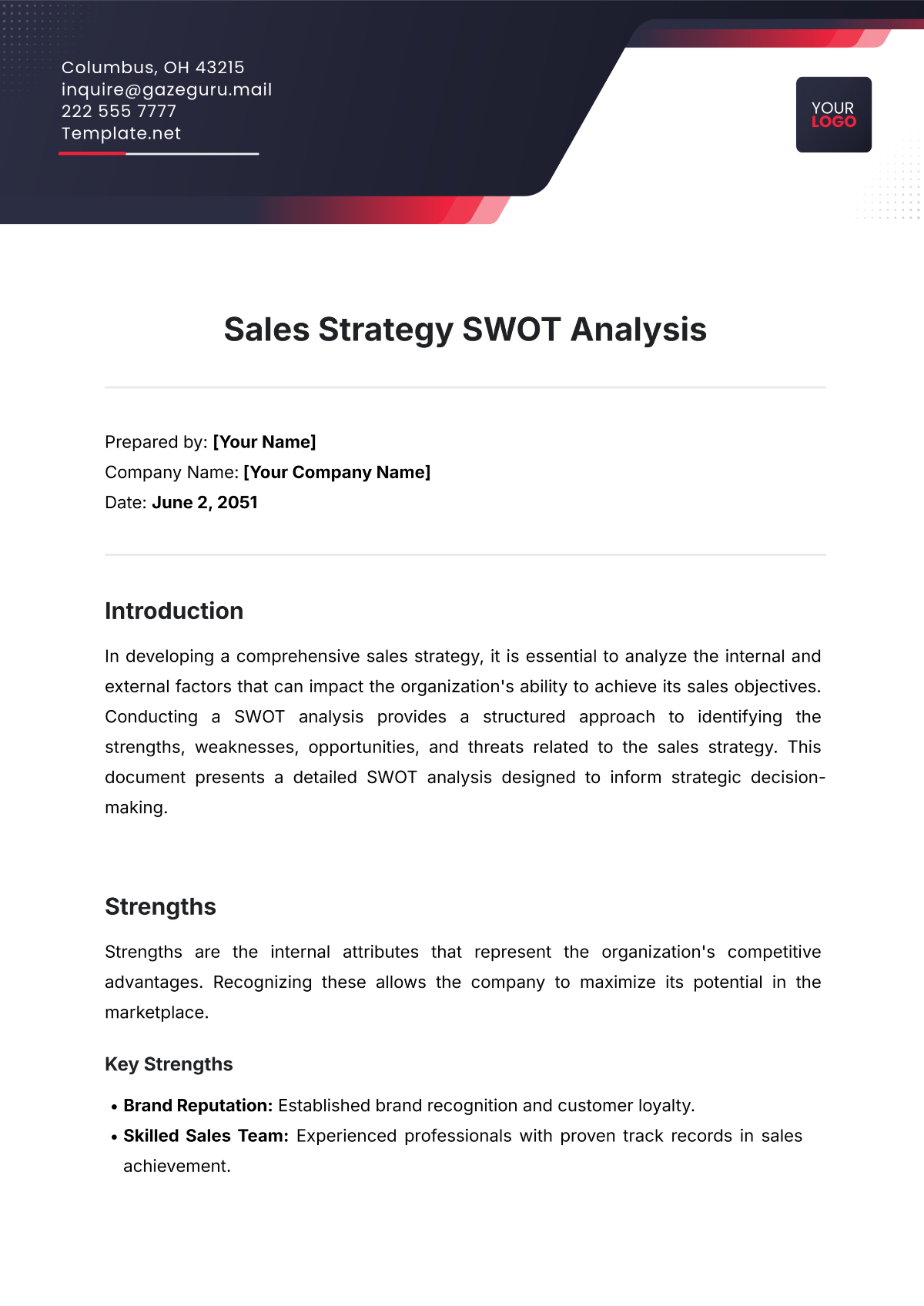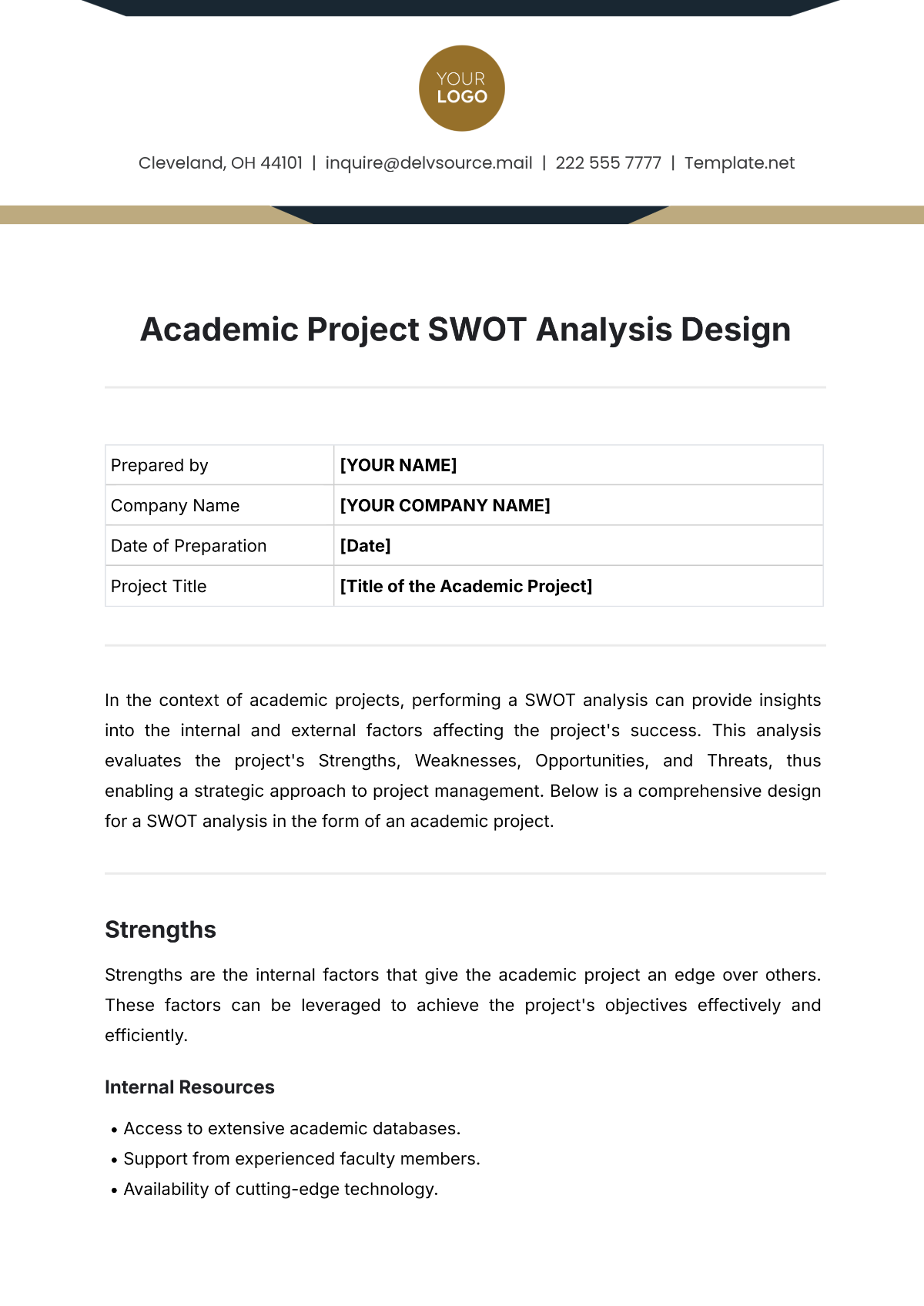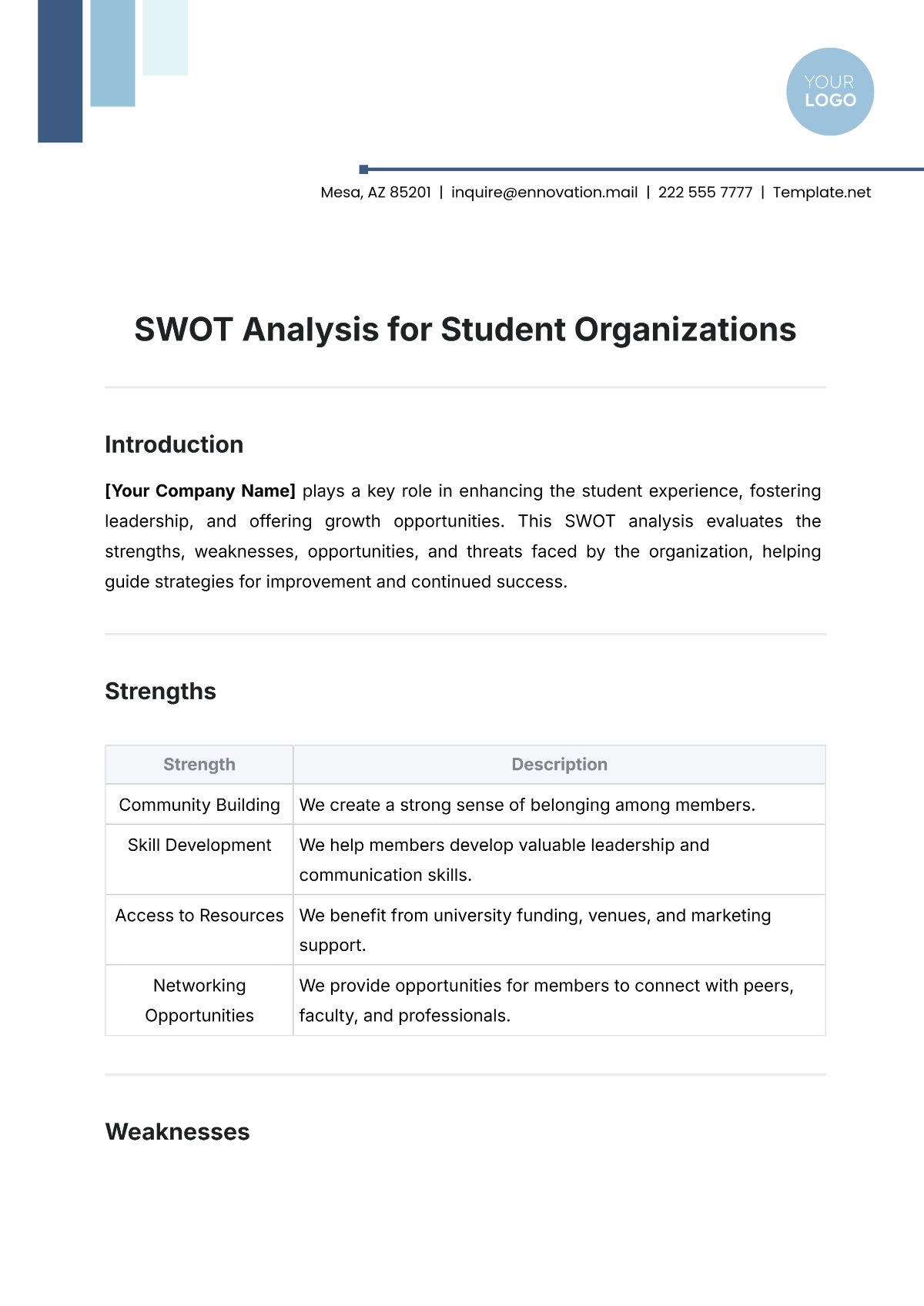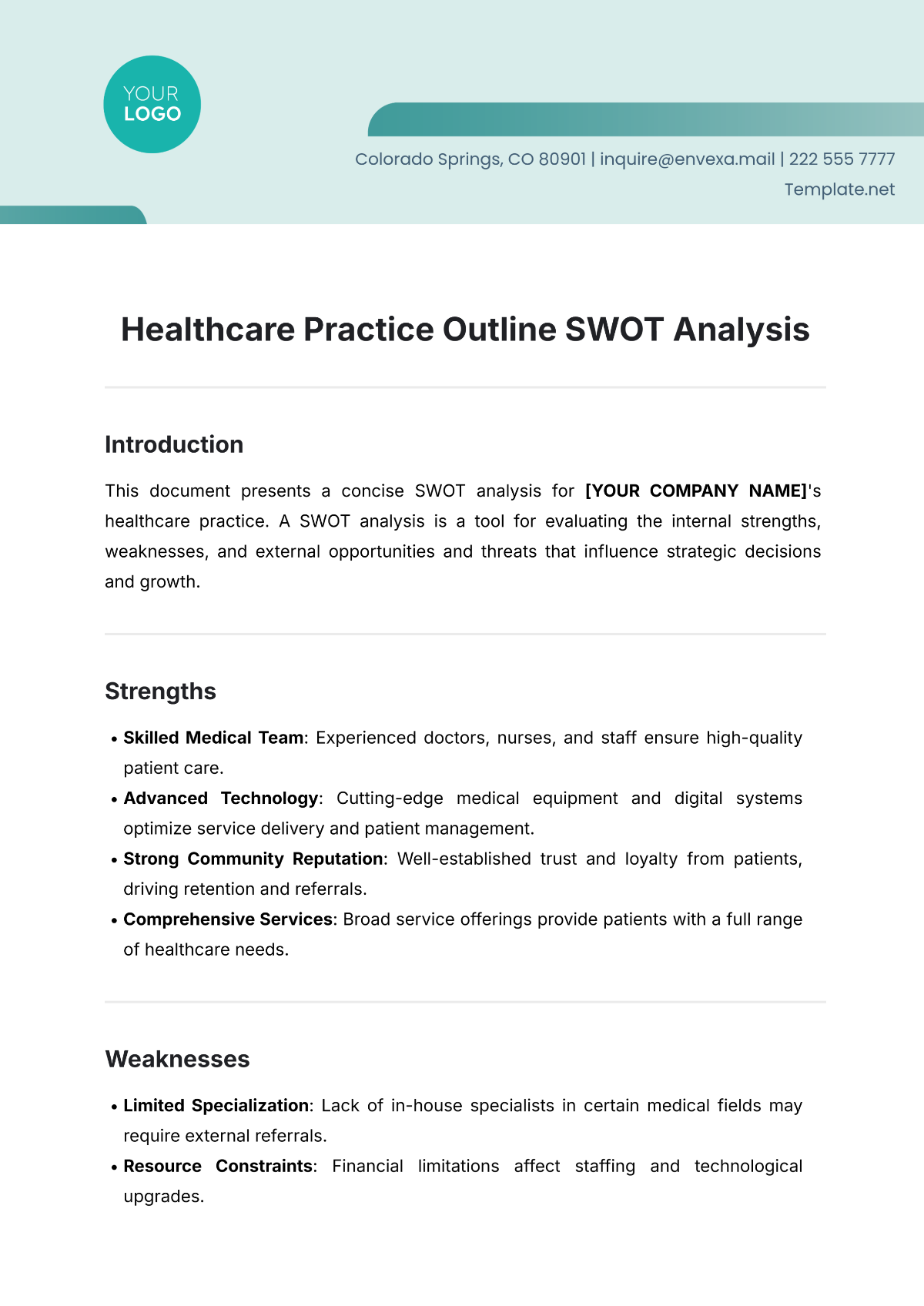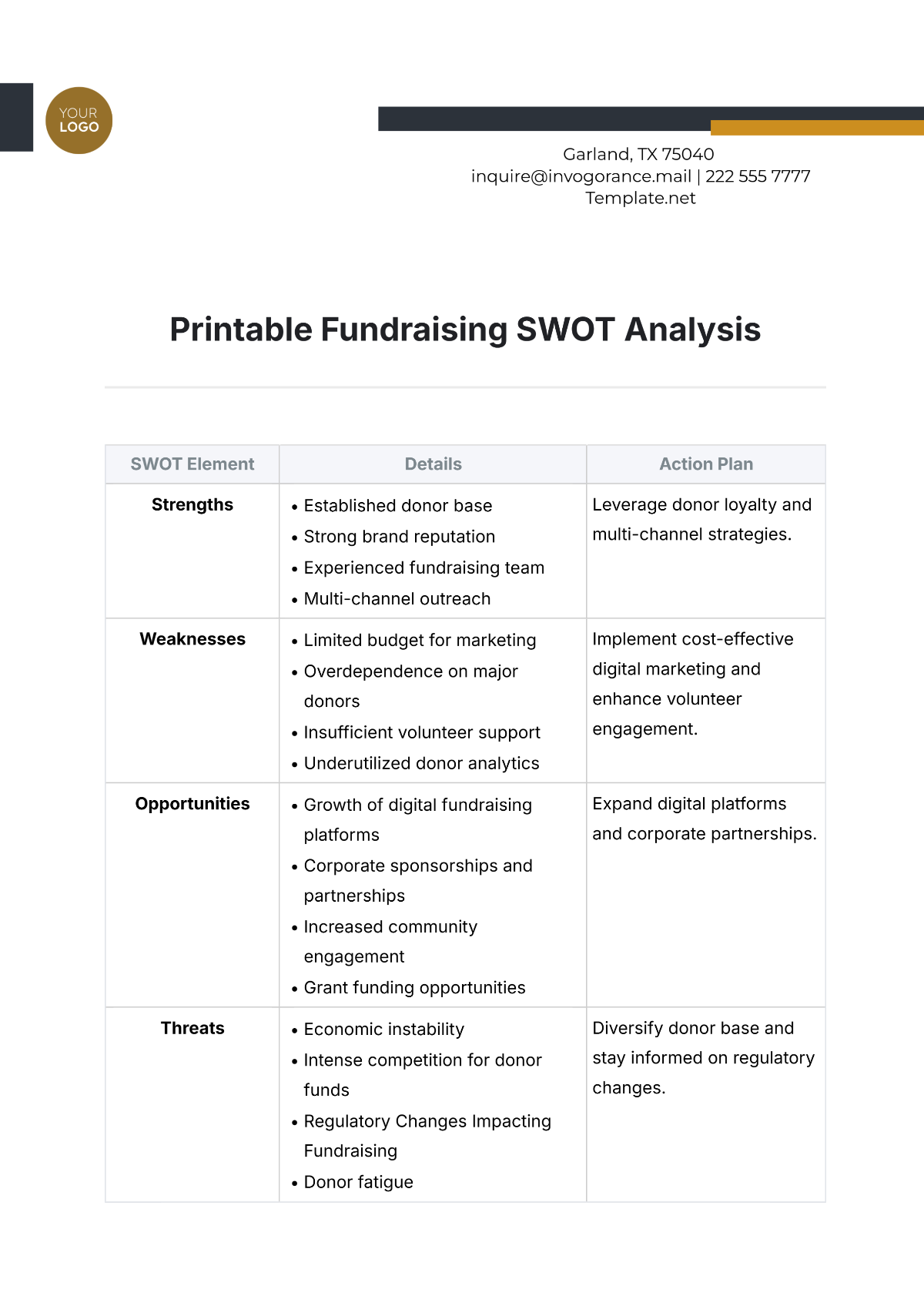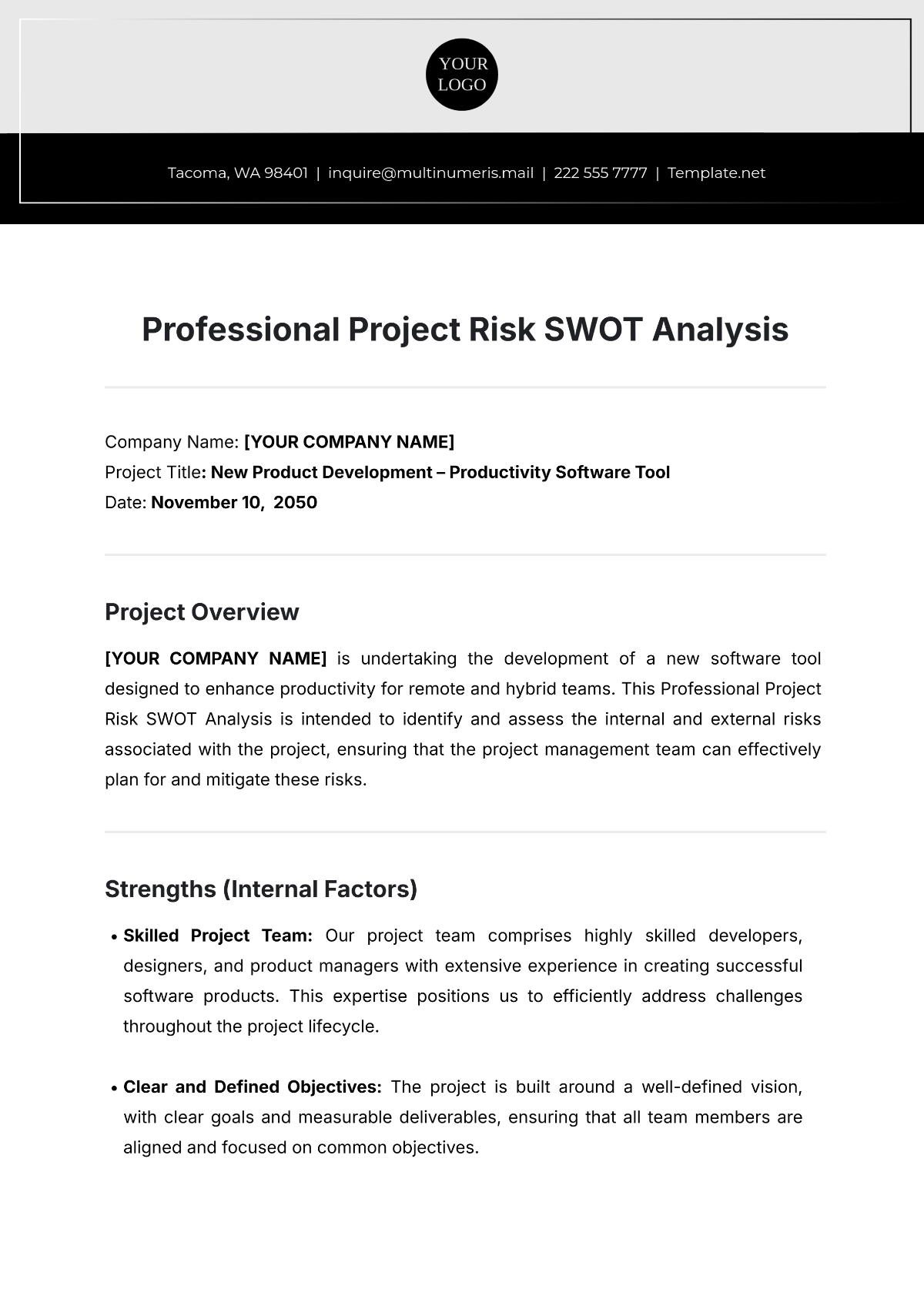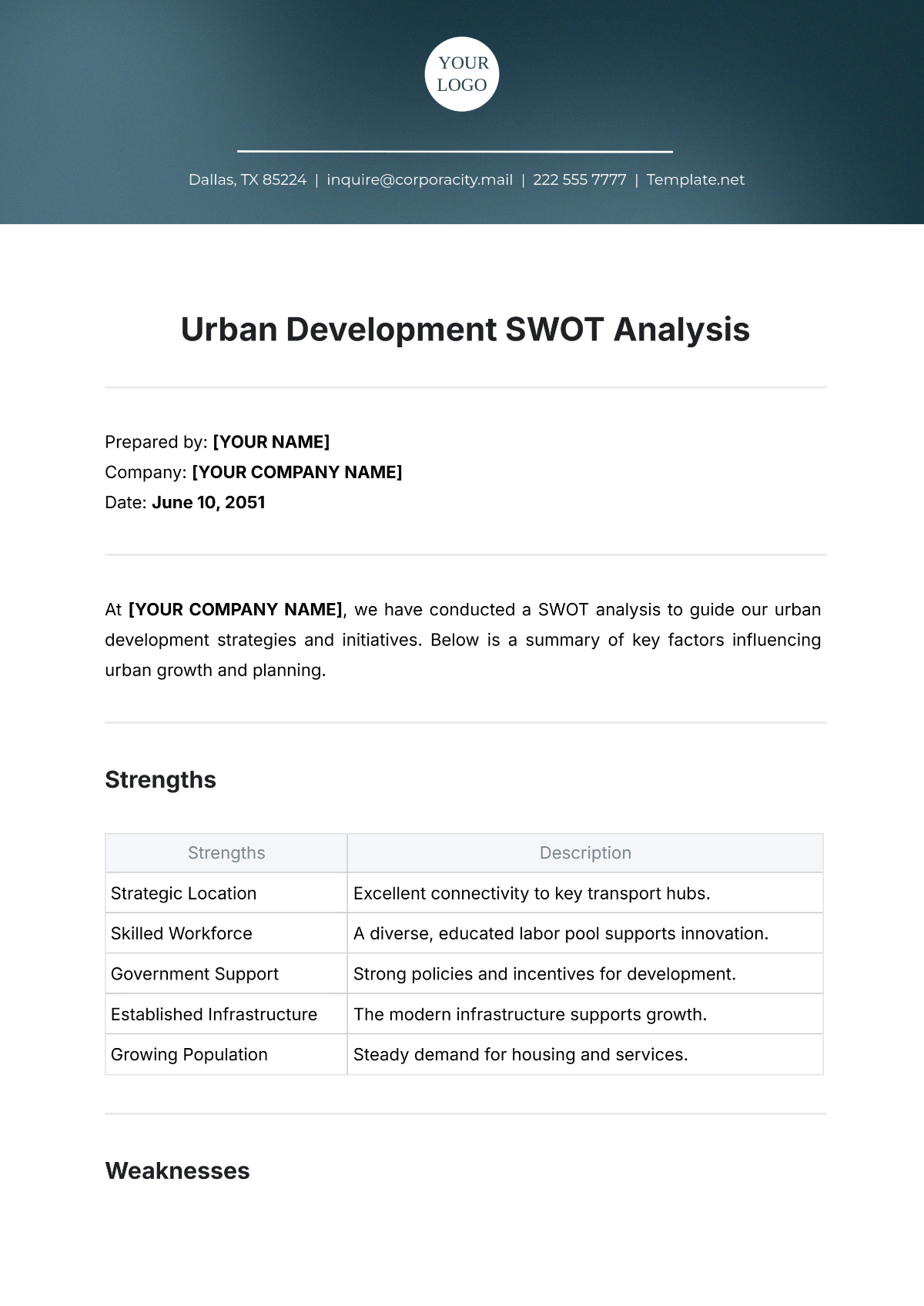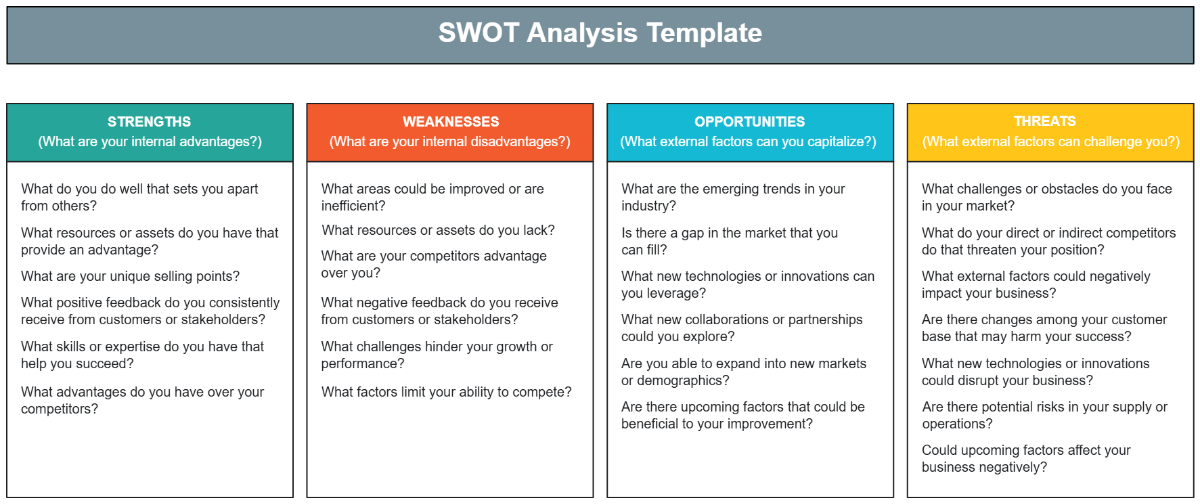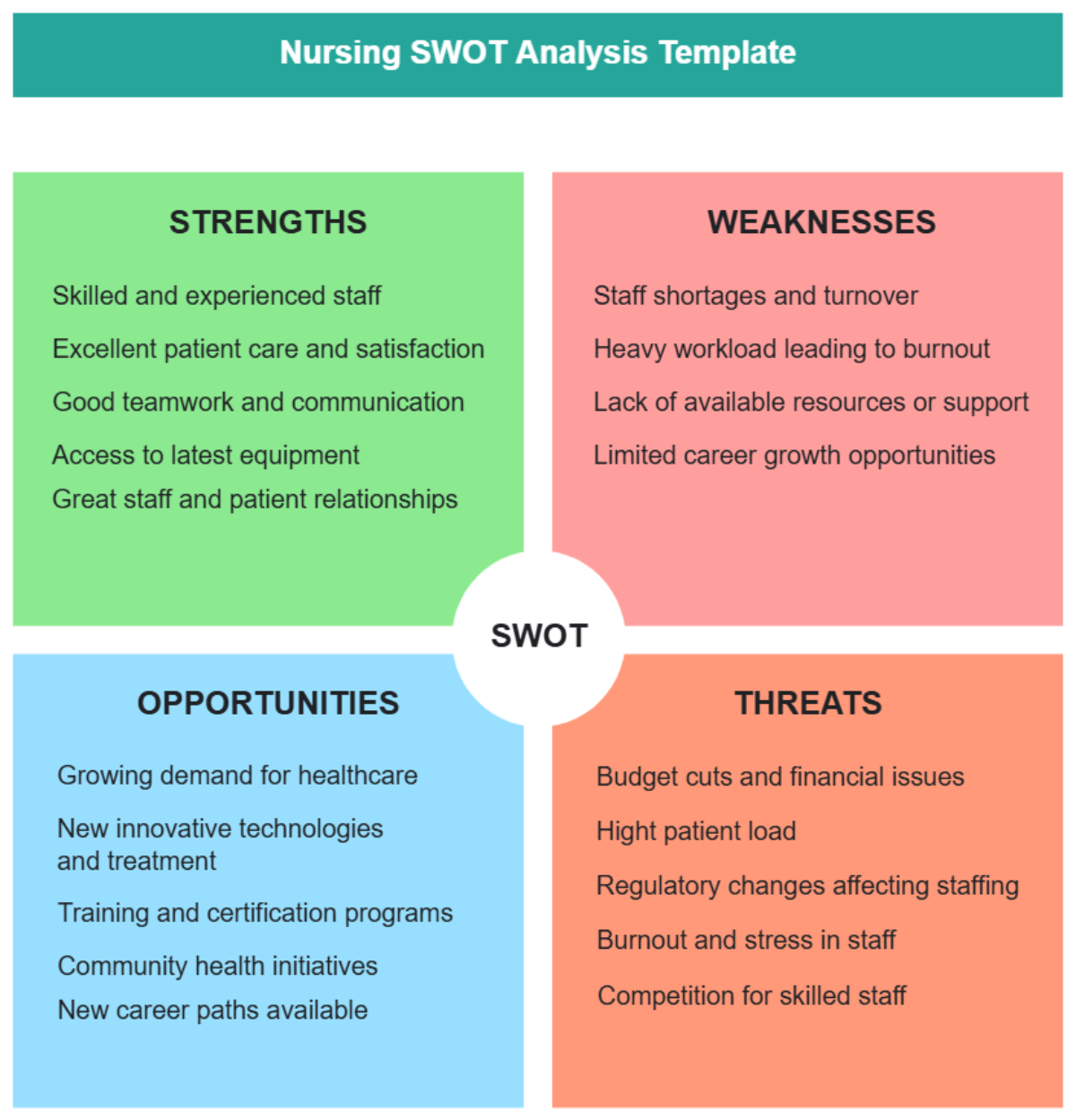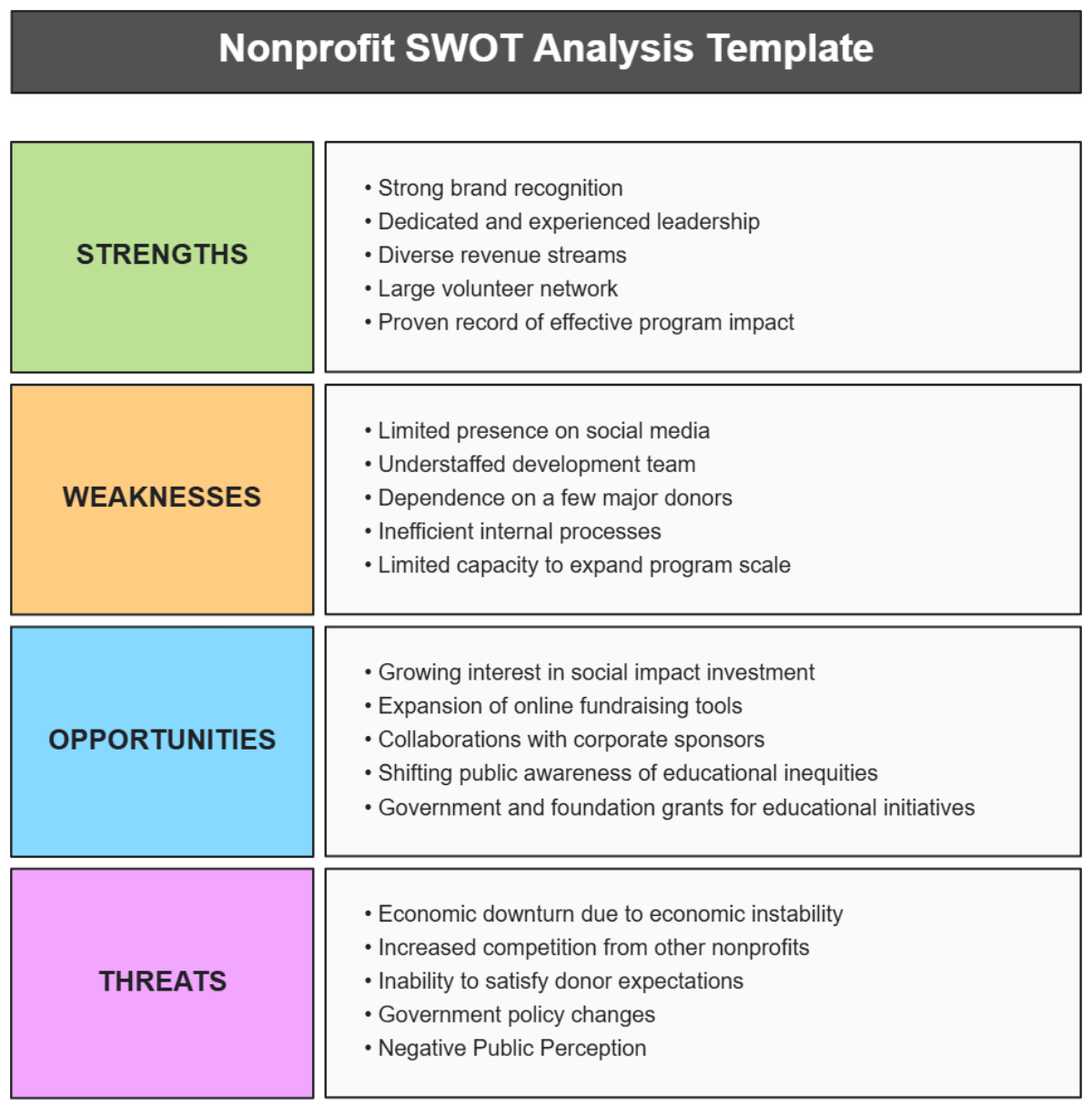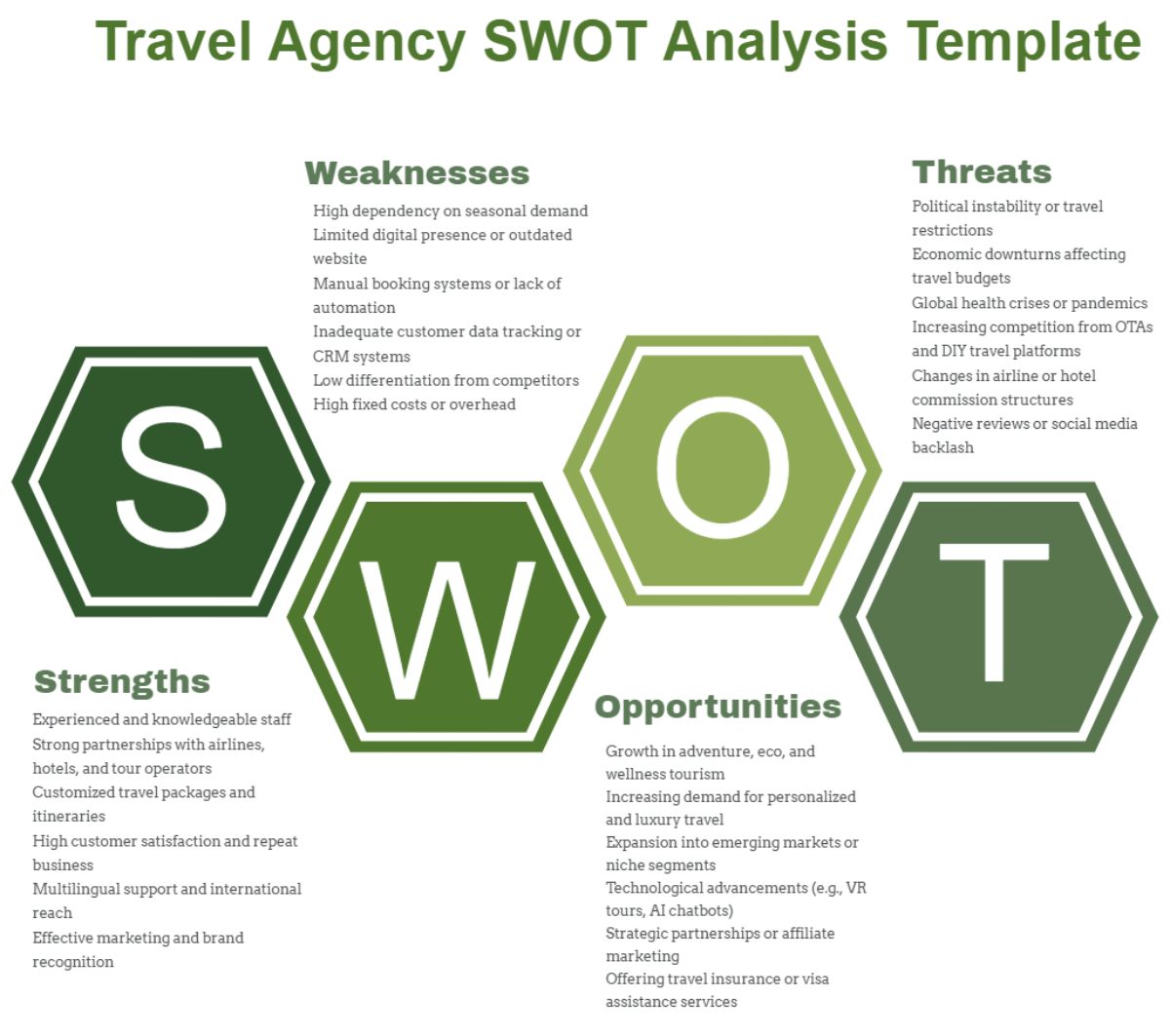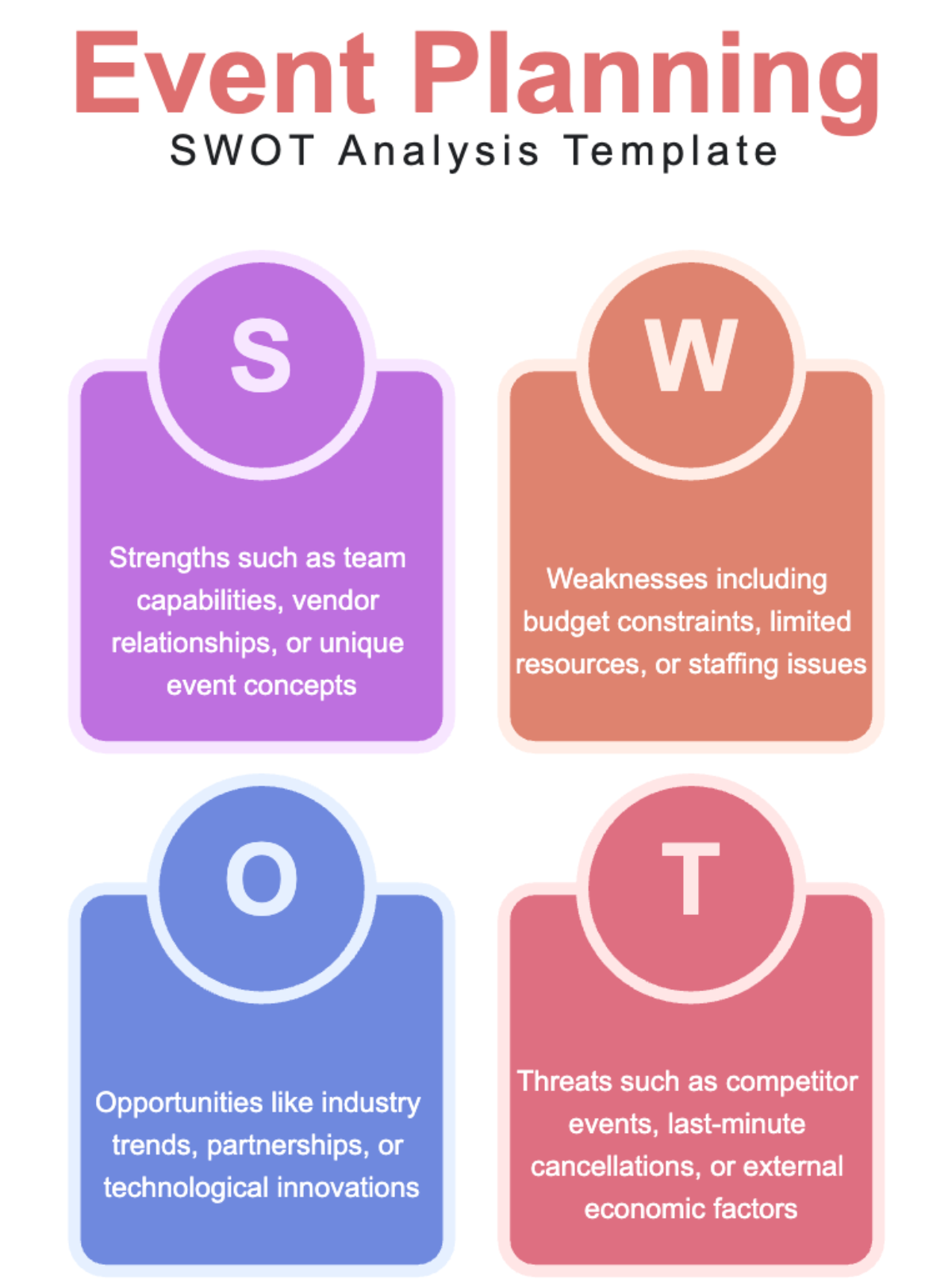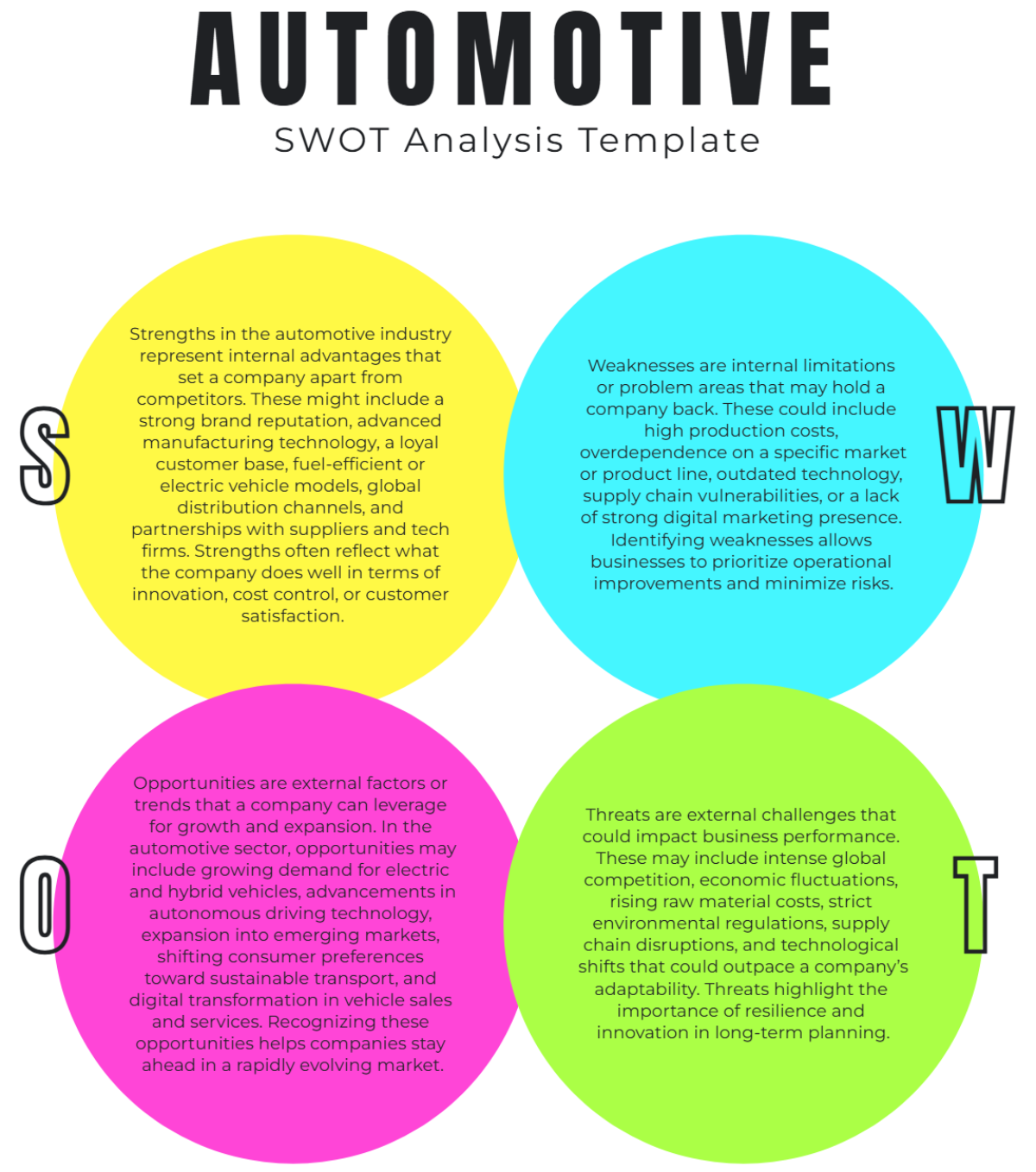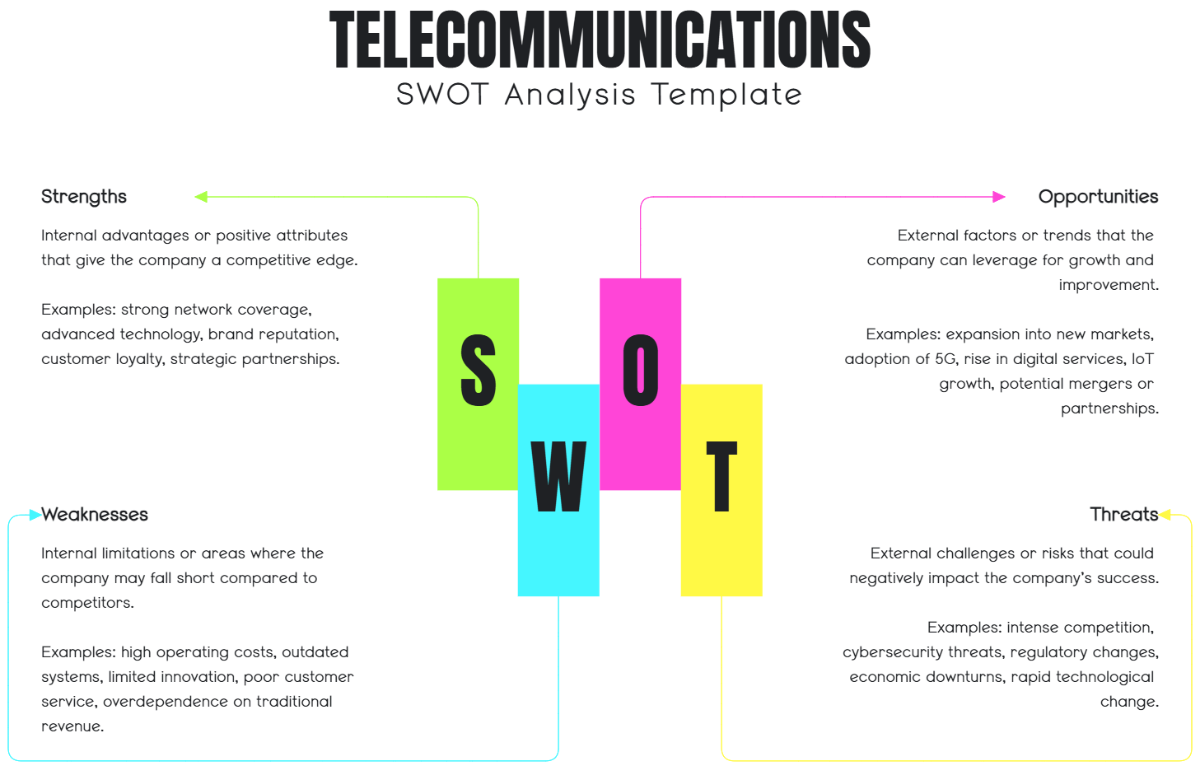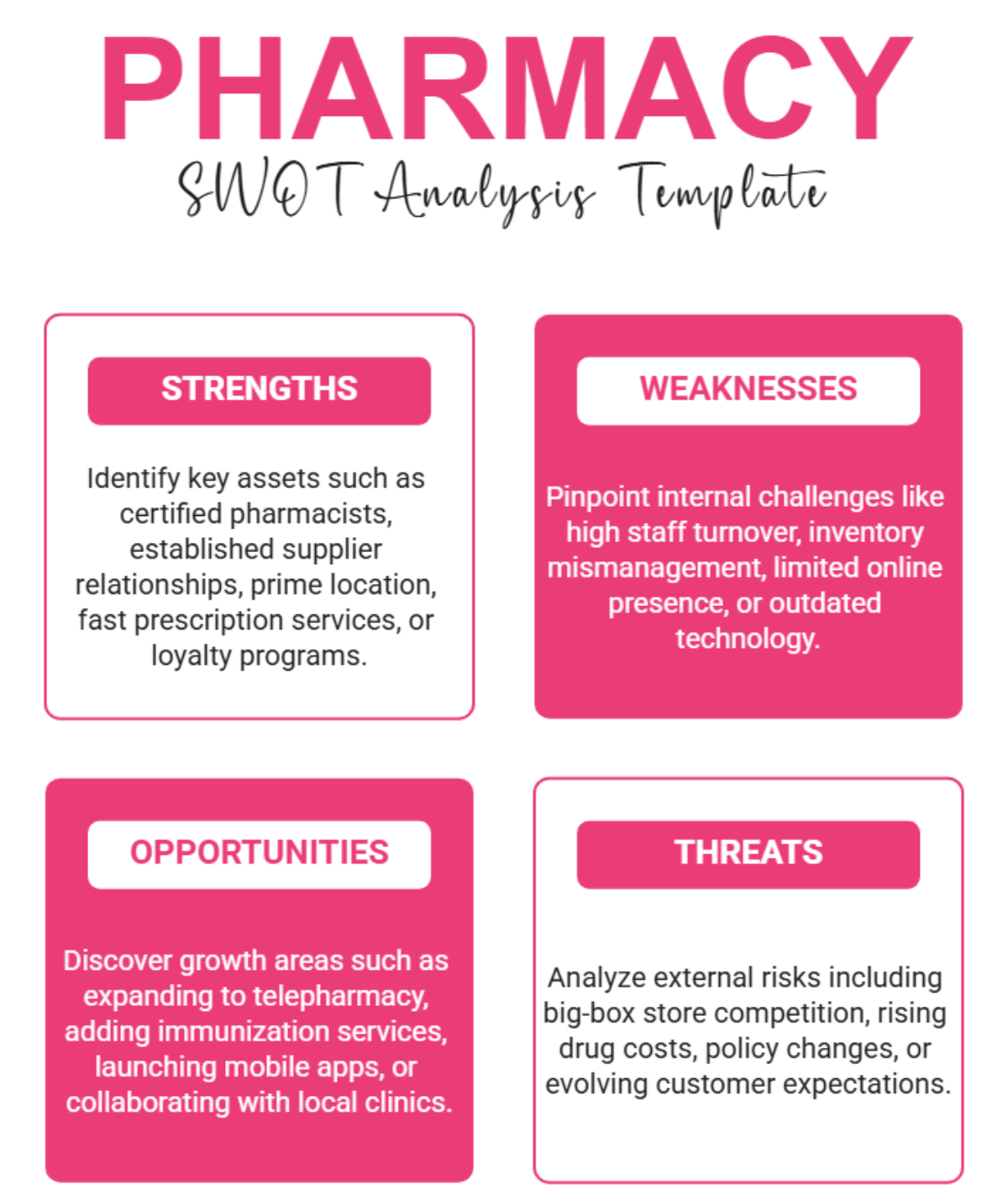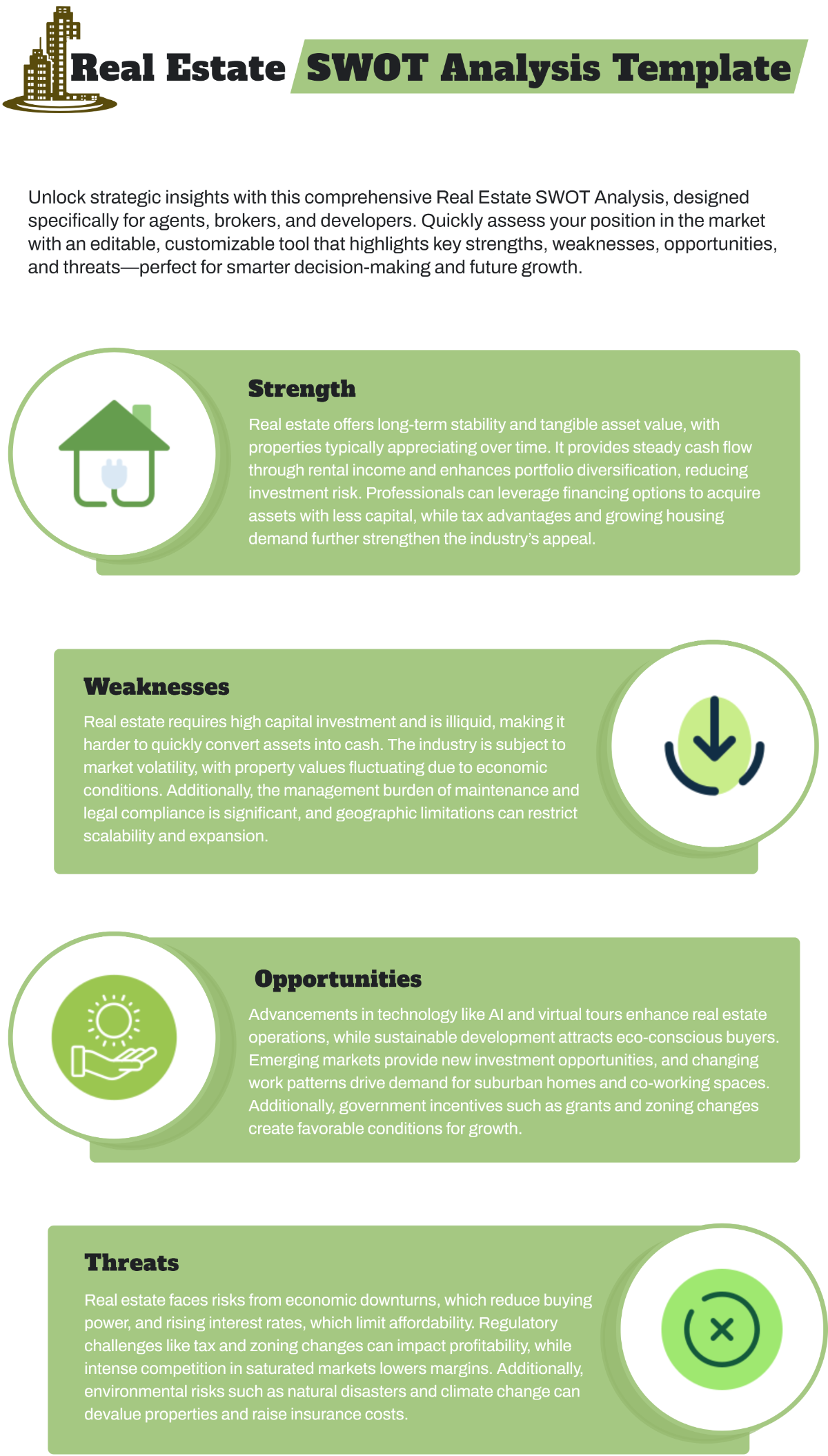Free Project SWOT Analysis Template
Project SWOT Analysis
Prepared by: | [Your Name] |
Department: | [Your Department] |
Company: | [Your Company Name] |
I. Executive Summary
This document provides a comprehensive SWOT analysis for the upcoming product launch by [Your Company Name]. It aims to identify key strengths, weaknesses, opportunities, and threats to inform strategic decision-making and ensure a successful market introduction.
II. Introduction
The SWOT analysis for the upcoming product launch by [Your Company Name] aims to provide a comprehensive assessment of the internal and external factors influencing the project's success. By identifying strengths, weaknesses, opportunities, and threats, this analysis will guide strategic planning and market positioning to ensure a successful market introduction. Understanding these factors will enable [Your Company Name] to capitalize on strengths, address weaknesses, seize opportunities, and mitigate threats effectively.
III. Current Situation Analysis
The current situation analysis reveals that [Your Company Name] is preparing to launch a groundbreaking new smartphone model, aimed at tech-savvy consumers in the global market.
Product Features: The product features cutting-edge technology, including advanced AI capabilities and augmented reality functionalities, designed to revolutionize the mobile experience.
Target Market: The target market comprises millennials and Gen Z consumers seeking innovative, feature-rich smartphones.
Competitive Landscape: Despite intense competition from established brands, [Your Company Name] has a unique opportunity to disrupt the market with its innovative product offering.
Challenges: However, challenges such as limited brand awareness and distribution channels need to be addressed to ensure a successful launch.
IV. SWOT Analysis
A. Strengths
Strong brand reputation established in the market.
Advanced technology integration enhancing the product’s usability.
Robust support from an experienced management team.
Positive preliminary feedback from test markets.
B. Weaknesses
Limited budget for marketing compared to larger competitors.
Dependency on third-party suppliers for critical components.
Initial production capacity constraints impacting supply.
C. Opportunities
Growing market demand for innovative products in the technology sector.
Potential partnerships with leading retail chains.
Expansion of product line as market acceptance grows.
D. Threats
Emerging competitors with similar product offerings.
Changes in regulatory landscape could impact product features.
Market volatility and economic downturns affecting consumer spending.
V. Recommendations
Based on the SWOT analysis, the following recommendations are proposed for the product launch project:
Leverage strengths to capitalize on opportunities: Utilize [Your Company Name]'s strong brand reputation and advanced technology to penetrate new markets and attract early adopters.
Mitigate weaknesses to minimize threats: Invest in targeted marketing campaigns to overcome limited brand awareness and establish a strong presence in key markets. Additionally, diversify the supplier base to reduce dependency risks and ensure a seamless supply chain.
Develop a strategic action plan with clear objectives and timelines: Implement a phased approach to the product launch, focusing on building brand recognition, expanding distribution channels, and enhancing customer engagement. Set specific milestones and timelines to track progress and adjust strategies accordingly.
VI. Conclusion
In conclusion, the SWOT analysis underscores the critical importance of strategic planning and proactive management in ensuring the success of the product launch. By leveraging strengths and opportunities while addressing weaknesses and threats, [Your Company Name] can position itself as a leading innovator in the competitive smartphone market. The implementation of the recommended strategies is expected to have a significant impact on the success of the product launch, driving market penetration, and fostering long-term growth.
VII. Appendix
The following additional data, charts, and references were used in the analysis:
Consumer Preferences:
Figure 1: Key Factors Influencing Smartphone Purchases
Market Trends:
The global smartphone market is projected to reach $1.5 trillion by 2050, driven by increasing demand for connected devices and mobile internet usage.
Adoption of 5G technology is expected to grow rapidly, with an estimated 80% of smartphones sold being 5G-compatible by 2050.
Wearable technology integration, such as smartwatches and fitness trackers, is becoming increasingly popular among smartphone users.
